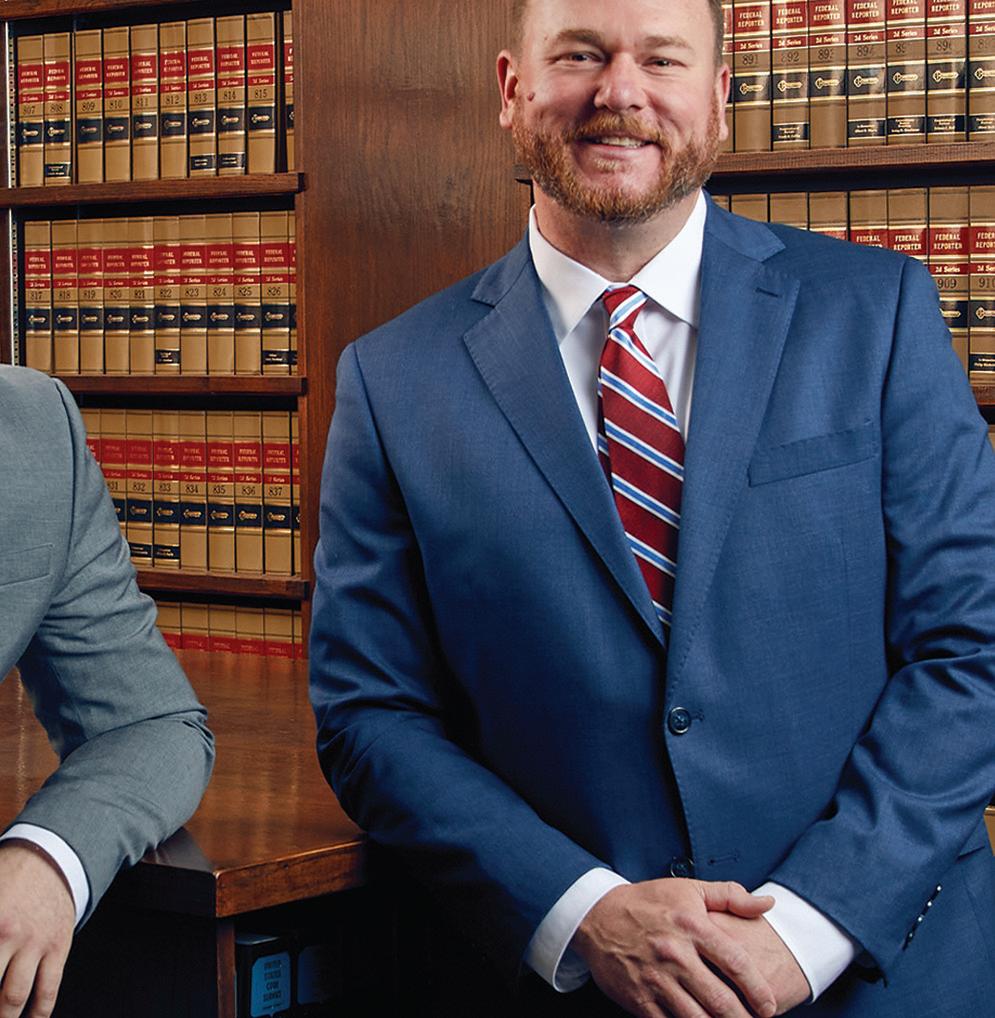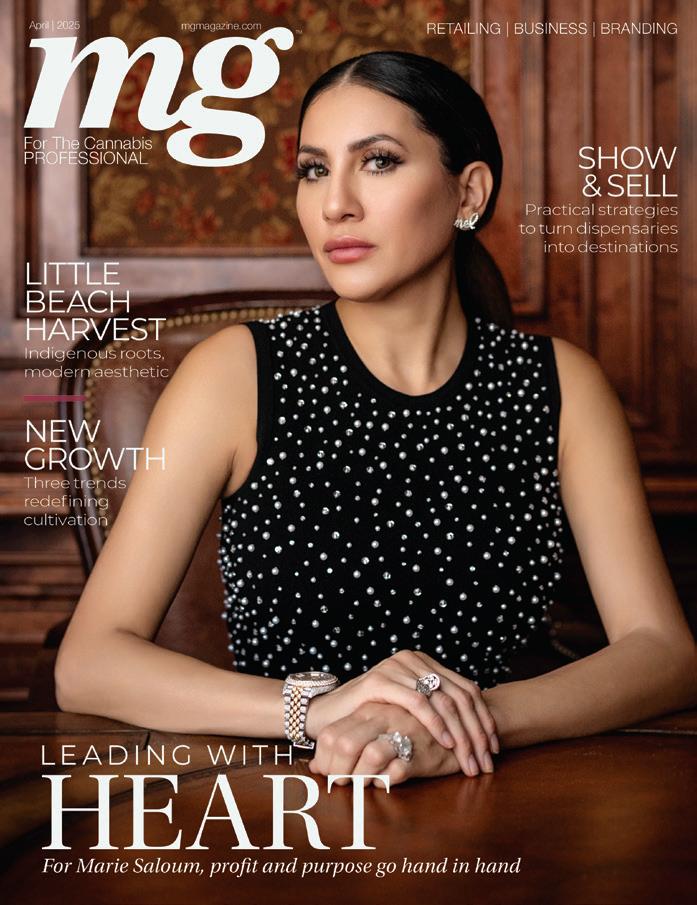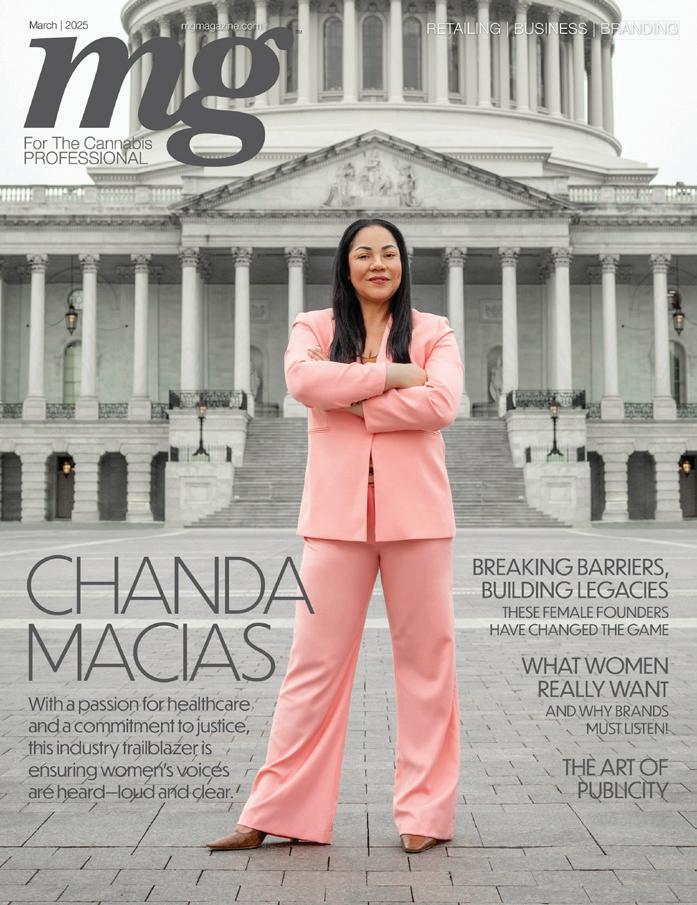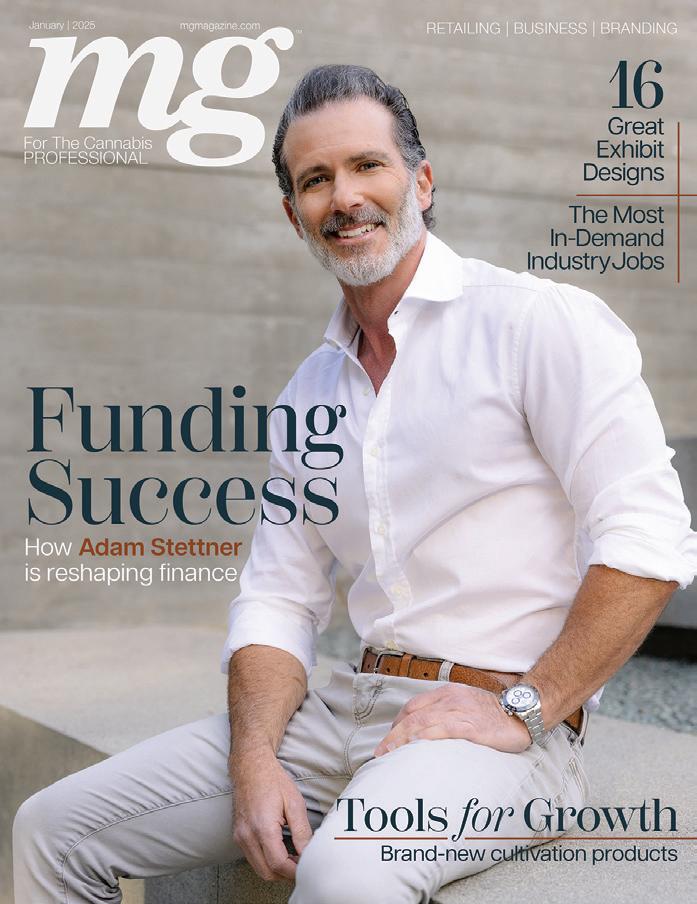For The Cannabis PROFESSIONAL
Herb Your Enthusiasm
Women leaders bring fire to the flower

Women leaders bring fire to the flower
One of the industry’s fiercest voices speaks out about policy, power, and progress.
for connection, compliance, & growth


JOIN THE WAITLIST NOW






Introducing SB1 (Sensi Boost 1) — Advanced Nutrients’ 8th-Generation Breakthrough Brix, Resin & Terpene
Enhancer
Supercharge your grow with SB1 for massive, sugar-coated, resin-saturated buds exploding with flavor and aroma.
After 25+ years of research, we’ve cracked the code on crafting the sweetest, gooiest, most terpene-rich flower possible.




NanoCarb : Breakthrough nanotechnology enables direct sugar uptake, maximizing brix levels for unsurpassed resin production and terpene enhancement. Unlike conventional products with oversized sugar molecules that only feed substrate microbes, NanoCarb’s nanosized carbohydrates are absorbed directly into your plants, fueling rapid growth, significantly enriching flavor profiles, and intensifying the nose.
Phyto-Sacchara : Advanced Nutrients’ exclusive compound derived from fermented sugarcane extracts. This powerful biostimulant unlocks your flower’s fullest potential , enhancing flavor, quality, and bag appeal like nothing else on the market.







Maximize terpene production for an unforgettable aroma
Amplify bud weight and yield



Push trichome development into overdrive for unparalleled crop value





Increase brix content for rich flavors




is the only product available anywhere that guarantees full sugar absorption for tastier, more lucrative


With over 25 years of science-backed innovation, Advanced Nutrients delivers solutions that growers in over 120 countries trust to maximize crop value. Don’t waste your time and money on subpar carbohydrates your plants can’t absorb. Harness SB1’s cutting-edge technology and experience heavier harvests of the frostiest, most mouthwatering flower you’ve ever produced.

















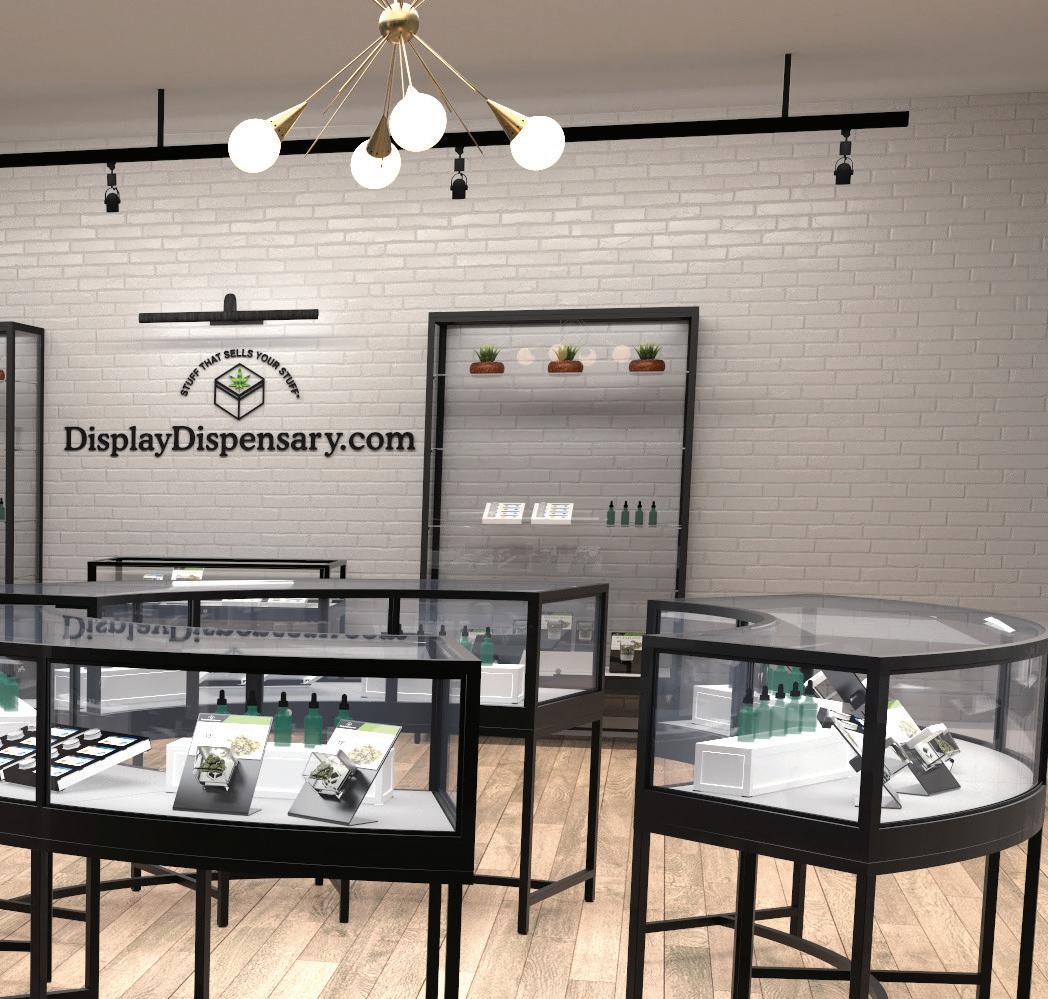




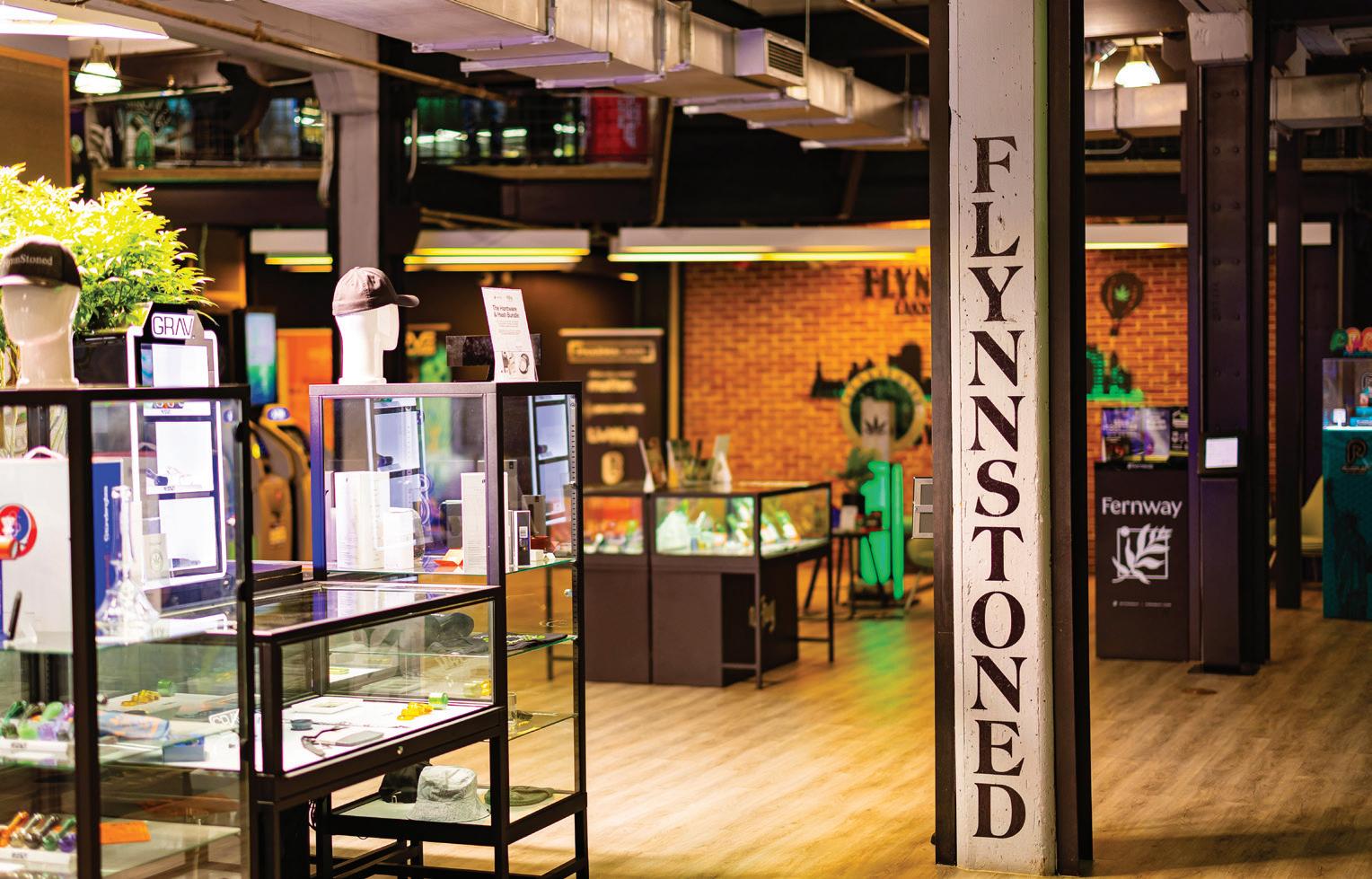


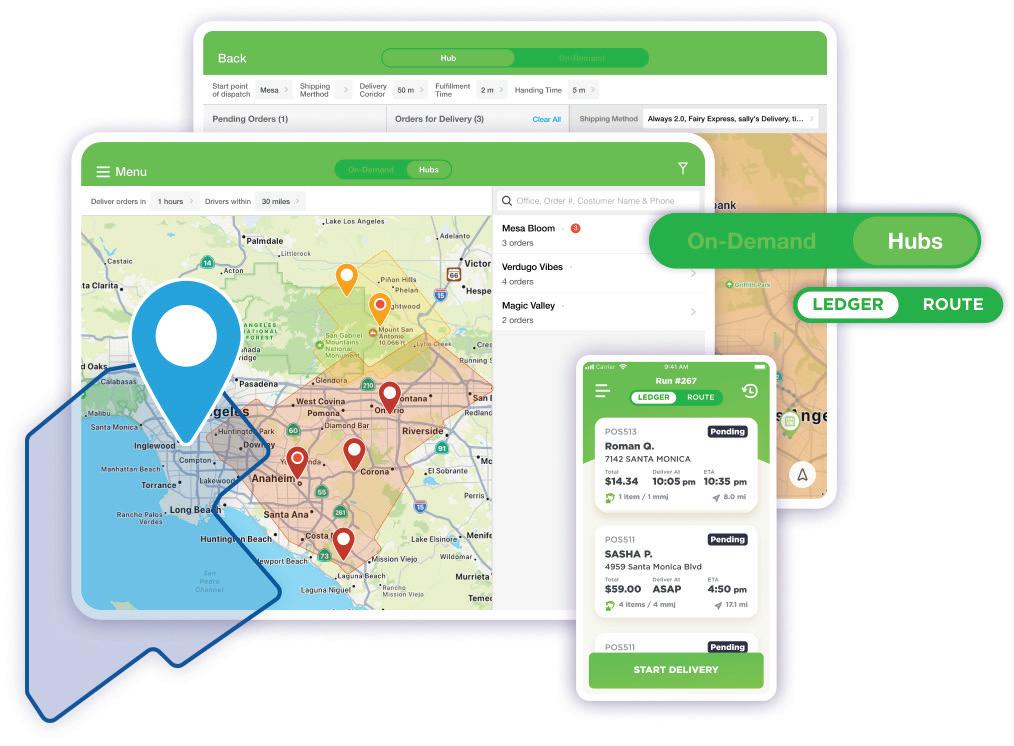
News, data, trends, and other tidbits for the well-informed professional.
Creative rewards programs turn casual buyers into brand believers.
For decontamination, X-rays offer advantages in safety, cost, and product quality.

—HARRY S. TRUMAN
Truman’s words often get tossed around when politics turn particularly toothy. But lately, his quote feels equally applicable to our industry. As the feds debate whether to reschedule the plant and states and cities rewrite the rules faster than a puppy can chew through shoes, one thing seems clear: If you’re hoping for easy allies, you’d better bring your own canine companion.
That’s part of why Cat Packer is on our cover this month. A veteran of drug policy reform and founding director of Los Angeles’s Department of Cannabis Regulation, Packer is an expert at clawing through spin and half-measures. She’s demanding a system that actually serves the people it claims to protect—and she’s not afraid to call out empty gestures.
Her voice joins a chorus of others in this issue sounding the alarm about performative progress. Our social-equity feature explores what happens when programs designed to level the playing field get tripped up by politics, bad math—or worse, greed. Meanwhile, some of the women driving the industry forward explain what it takes to lead in a space dominated by men, where the rules favor patriarchy and support systems often feel like afterthoughts.

One disturbing trend that looms large: the coordinated federal effort to dismantle diversity, equity, and inclusion (DEI) initiatives. Across the country, DEI programs are under attack— not just in government, but in boardrooms and classrooms too. The cannabis industry, built in part on a promise to repair the harms of the war on drugs, can’t afford to join the retreat. Abandoning DEI wouldn’t be just a betrayal of the industry’s founding promise; it also would put us on a fast track to replicating the same systems that excluded so many for so long.
From the beginning, this industry has been fueled by a rebellious determination to make the world a fairer, more just place. The people on these pages—and countless other, unsung heroes of the movement—bring hope, resilience, and a stubborn refusal to accept the status quo. They’re working to reframe tired talking points, cut through red tape, and find real solutions to persistent challenges. Change won’t be easy, but it will be rewarding.
If you’re looking for a walk in the park, get a dog. If you want legitimate progress, bring your voice—and maybe a sharp pair of teeth.

Editorial Director Kathee Brewer editorial@inc-media.com


























Creative Director Angela Derasmo










Jeff Adams













As founder and managing director of XRPure, Jeff Adams oversees a company propelling innovation in cannabis decontamination using X-ray energy. His thirty years of experience in industrial manufacturing operations spans process engineering, quality management, operations management, sales, and general management. Adams earned a master’s degree in mechanical engineering from MIT and an executive MBA from Brigham Young University. xrpure.com
Digital Strategist Dexter Nelson
Circulation Manager Faith Roberts
Contributing Writers Alex Boone, Alyson Jaen Esq., Anthony Coniglio, Brendan McKee, Brian O’Connell, Christian Wolfgram Esq., Danny Reed, Ellen Holland, Jake Webb Esq., Jeff Adams, Justin M. Brandt Esq., Kim Prince, Laura A. Bianchi Esq., Leah Eisenberg Esq., Marc Beginin Esq., Michael Mejer, Pam Chmiel, Paul Rivard Esq., Rachel Gillette Esq., Rachel Permut, Richard Proud, Robert T. Hoban Esq., Ruth Rauls Esq., Scott Thomas, Shane Johnson MD, Shawna Seldon McGregor, Stacy Litke, Sue Dehnam, Tara Coomans, Taylor Engle, Will Read
Artists/Photographers Akmal, Cindy Trinh, Grav, Luthfi Alfarizi, Mitchell Griest, Mike Rosati, Christine Bishop, Unsplash
ADVERTISING SALES & CLIENT SERVICES
BRANDI MESTA
Senior Account Executive Brandi@inc-media.com (424) 703-3198
BUSINESS OFFICES
Chief Executive Darren Roberts
Tech Architect Travis Abeyta
Accounting
Diane Sarmiento
Brittany Gambrell
Subscriptions
subscribe.mgmagazine.com
Back Issues
store.mgmagazine.com
Mailing Address
mg Magazine
23055 Sherman Way, Box 5069 West Hills, CA 91308
MEG CASHEL Account Manager Meg@inc-media.com (424) 246-8912
mg Magazine: For The Cannabis Professional Vol.11, No.7 (ISSN 2379-1659) is published monthly by Incunabulum LLC, located at 23055 Sherman Way, No. 5069, West Hills CA 91308. Periodicals Postage Paid at Las Vegas Post O ce and additional mailing locations. POSTMASTER: Send all UAA to CFS. NON-POSTAL AND MILITARY FACILITIES: Send address corrections to mg Magazine, 23055 Sherman Way, No. 5069, West Hills CA 91308.
mg is printed in the USA and all rights are reserved. © 2025 by Incunabulum LLC. mg considers its sources reliable and verifies as much data as possible, although reporting inaccuracies can occur; consequently, readers using this information do so at their own risk. Each business opportunity and/or investment inherently contains criteria understanding that the publisher is not rendering legal or financial advice. Neither Incunabulum LLC nor its employees accept any responsibility whatsoever for contributors’ activities or content provided. All letters sent to mg Magazine will be treated as unconditionally assigned for publication, copyright purposes, and use in any publication or brochure and are subject to mg’s unrestricted right to edit and comment.






BOWLING GREEN, Ohio, and NORMAL, Ill. – Research has confirmed one of the industry’s primary talking points: Legalization often precedes a decline in prescription drug use—or at least prescription drug spending.
According to a study published in the journal Health Economics, researchers at Bowling Green State University and Illinois State University documented a decline in prescription expenditures among working adults covered by small-group health insurance plans.
“We find that net prescription drug claims in small-group insurance markets are reduced by approximately 6 percent following recreational cannabis legalization,” Amanda C. Cook, E. Tice Sirmans, and Rhet A. Smith wrote in their report. “The reduction in claims in the small-group market grows stronger in magnitude over time and gains statistical significance during the second full year of legalized cannabis.”
Surprisingly, they did not observe a similar phenomenon among participants in large-group health plans. They speculated large plans may not be as subject to the apparent “cannabis effect” because many large employers mandate drug testing.
To draw correlations, the researchers examined prescription drug claims reported by insurers between 2010 and 2019, then mapped expenditures with relation to the advent of medical and/or adult-use legalization in a particular region.
Their conclusion? “The legalization of cannabis offers a potential substitute to traditional prescription drugs and alternative methods for health maintenance,” the researchers wrote.

CBD may help mitigate problematic drinking, according to a study by researchers at the University of Sydney. In a study of binge-drinking mice (yes, you read that right), the scientists observed a “dose-dependent suppression of alcohol consumption by CBD” that could not be attributed to CBD-related sedation. A separate study indicated a single 800mg CBD dose may alleviate alcohol cravings in humans.
Canadian licensed producer Aurora Cannabis has been slapped with a class-action lawsuit alleging the company negligently failed to warn consumers about the risk of developing cannabis hyperemesis syndrome (CHS).
CHS, which is characterized by recurring bouts of severe nausea, vomiting, and abdominal pain, primarily affects those who partake daily over a long period. The only cure is complete abstinence.


Powered by















































Cannabis beverages are seeing strong summer growth as consumers seek refreshing, low-dose alternatives to alcohol.
In Q2 2024, sales were up 8% year-over-year—with California alone seeing 6% growth despite an overall market dip.
is surge aligns with the rise of "sober curious" lifestyles and demand for wellness-focused options. As the category expands, summer remains a key season for promoting cannabis drinks and capturing new customers. Fruity avors like strawberry lemonade and tropical blends are especially popular, driving increased interest in cannabis beverages.






Recommendations:






















Include infused beverages in featured categories on your website (i.e. Sta Picks, Summer Selections, etc) and o er bundles of di erent avors or BOGOs.




PHOENIX – Fourteen months after its parent company was forced into liquidation receivership, a $3.5-million, all-cash acquisition is poised to raise iconic counterculture magazine High Times from the dead.
RAW Rolling Papers founder Josh Kesselman, in partnership with former High Times co-owner and Chief Revenue Officer Matt Stang, funded the acquisition. The pair plans to relaunch High Times as a “comprehensive platform” for information, connection, and celebrity interviews. Kesselman told The Wall Street Journal he sank an additional $1.85 million into jump-starting the project, which will include limitedrun magazine editions and a revamped website. The new owners also intend to entertain product licensing deals and reintroduce the magazine’s Cannabis Cup events in early 2026.
Stang and the heirs of High Times founder Tom Forçade sold the publication and its assets to Adam Levin’s Oreva Capital in 2017. The $70-million deal formed the centerpiece of the subsequently organized Hightimes Holding Corporation, which almost immediately began acquiring publications, festivals, and dispensaries as part of a plan to dominate the industry and go public on the Nasdaq. By 2019, the corporation teetered on the edge of bankruptcy due to unpaid bills, overdue loans, unfulfilled acquisition contracts, and a stock scheme for which Levin pleaded guilty to federal criminal-conspiracy charges.
Kesselman and Stang have their own baggage. Kesselman and his family of companies are as well known for cannabis-related philanthropy as for appearing on court dockets. Stang was charged with conspiracy after a 2010 federal sting, Operation Green Venom, took down an alleged multimillion-dollar, multistate cannabis trafficking ring. He pleaded guilty to a lesser charge and paid a $250,000 fine.
Founded in 1974, High Times boasted a paid circulation of 500,000 copies at its peak in 1978. According to records presented to the receiver, the magazine had 8,419 paid print subscribers and 10,325 paid digital subscribers in April 2024. HighTimes.com ceased updating in June 2024, and the magazine published its final print edition in September.
“Marijuana is a very dangerous drug. Some people smoke it just once and go directly into politics.”
—Barry
Crimmins,
standup comic and author
30%

Confusion and costs hit hard. of consumers find dispensaries overwhelming.


56%
29% of consumers have cut back on purchases due to rising costs.
(Source: Sanctuary Wellness Institute study)

Three years after becoming the first Asian nation to legalize cannabis, Thailand is readying legislation to restrict the plant to medical use. The policy reversal could have dramatic economic consequences: Advocates warn the restriction could cause a 90-percent drop in the number of licensed dispensaries.
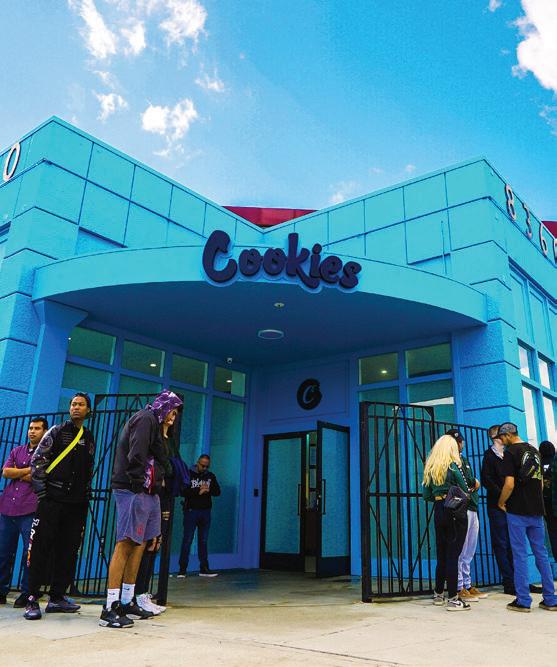
Cookies is set to collect $22.7 million in damages and fees after a California judge ruled a national retail partner defaulted on a licensing deal with the brand. The 2020 deal required Cookies Retail to pay royalties in exchange for product, branding, and promotion, but the payments stopped in 2021.

Jeeter teamed with Jay (Jason Mewes) and Silent Bob (Kevin Smith) to drop Bluntman’s Chronic. The hash-hole pre-roll combines 1.5g of premium flower with 0.5g of cold-cure live rosin, capped by a cooldraw ceramic tip. To celebrate the collab, Jeeter and National Lampoon released a short video starring the comedy duo. jeeter.com

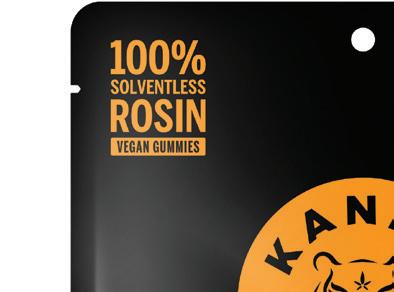
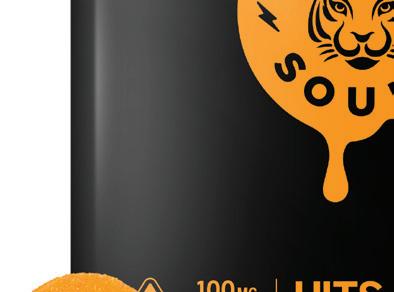



Kanha’s new fast-acting, vegan gummies are crafted with strain-specific, solventless rosin extracted using only ice, water, heat, and pressure. Kanha Rosin Sours capitalize on two trends: a doubling in rosin’s market share (per Headset) and a mainstream surge in the popularity of sour treats. Infused with 10mg THC per piece, the gummies are available in California, Massachusetts, Nevada, and Illinois. kanhatreats.com
Dispensary shoppers fall into three broad categories.

we are visual elements, the perfect balance of artistry and production.
We specialize in creating spaces that reflect the unique character of each brand, focusing on enhancing the consumer’s experience through tailored retail and commercial environments. Our approach is centered on understanding and translating your brand’s narrative into physical spaces that engage and inspire. learn
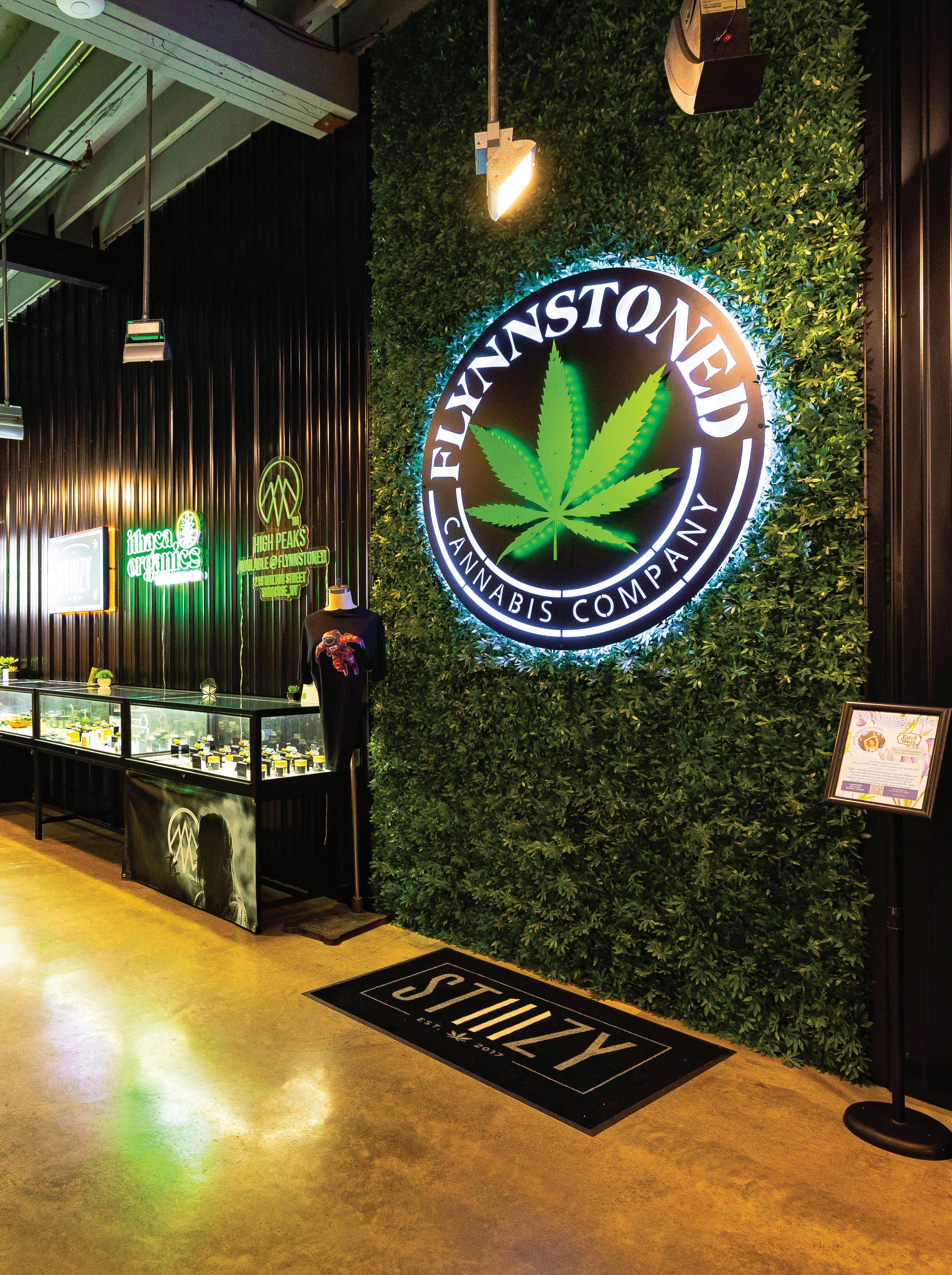

When Mike Flynn set out to create New York’s most ambitious dispensary, Display Dispensary delivered a custom layout that maximizes space, efficiency, and brand visibility.
Mike Flynn doesn’t think small. When he conceived FlynnStoned’s flagship store in Syracuse, New York, his vision required transforming a threestory, 13,000-square-foot retail space formerly inhabited by Urban Outfitters into a modern cannabis superstore offering a premium customer experience and an enormous product selection.
“Most dispensaries you walk into are like teeny-tiny bodega shops,” Flynn said. “I wanted mine to have every single product available on the market—or as close to it as I could get.”
To bring that vision to life required a deft touch with the floor plan, so Flynn turned to Display Dispensary. From the start, the design team’s goal was straightforward: monetize every square inch of floor and display space while maintaining a clean, elevated aesthetic.
“Mike and I think similarly, and the conclusion we came to was that he needed to include as many brands from the state of New York as he could get,” said Jack Rosenberg, head of business development at Display Dispensary. “So, what’s the best way to make money quickly? Selling out each showcase to specific brands.”


Collaborating with Flynn at every step of the process, Rosenberg and his team placed a streamlined showroom on the second floor. The design leads shoppers through the space along a semi-circular path, presenting them with brand displays at every turn.
The configuration arose from mutual inspiration, according to Rosenberg. “I looked at the layout and said, ‘What if we unify all these cases into one bold, rectangular display?’” he said. “Mike turned to me and said, ‘I was just getting ready to ask you about that.’”

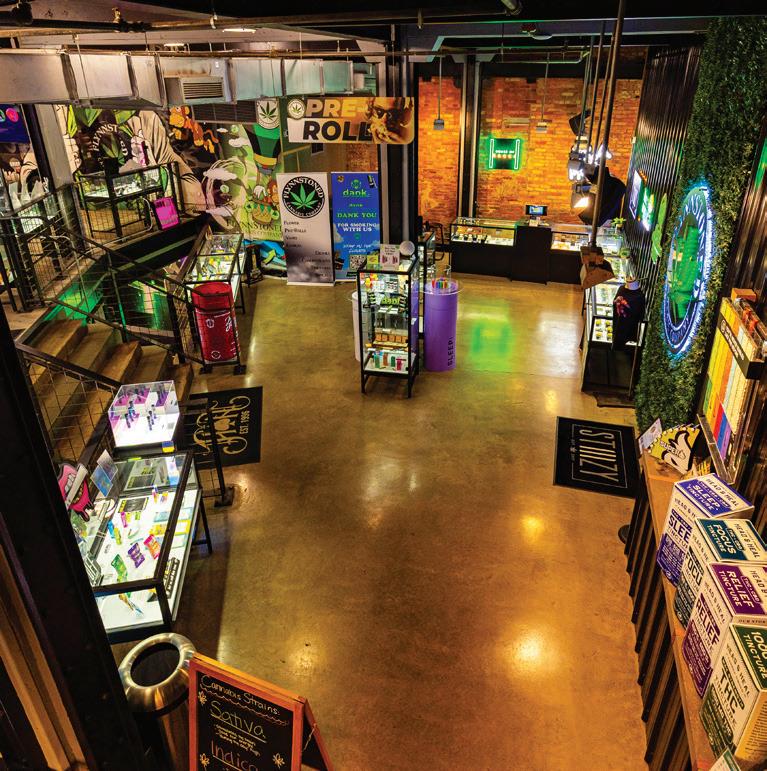
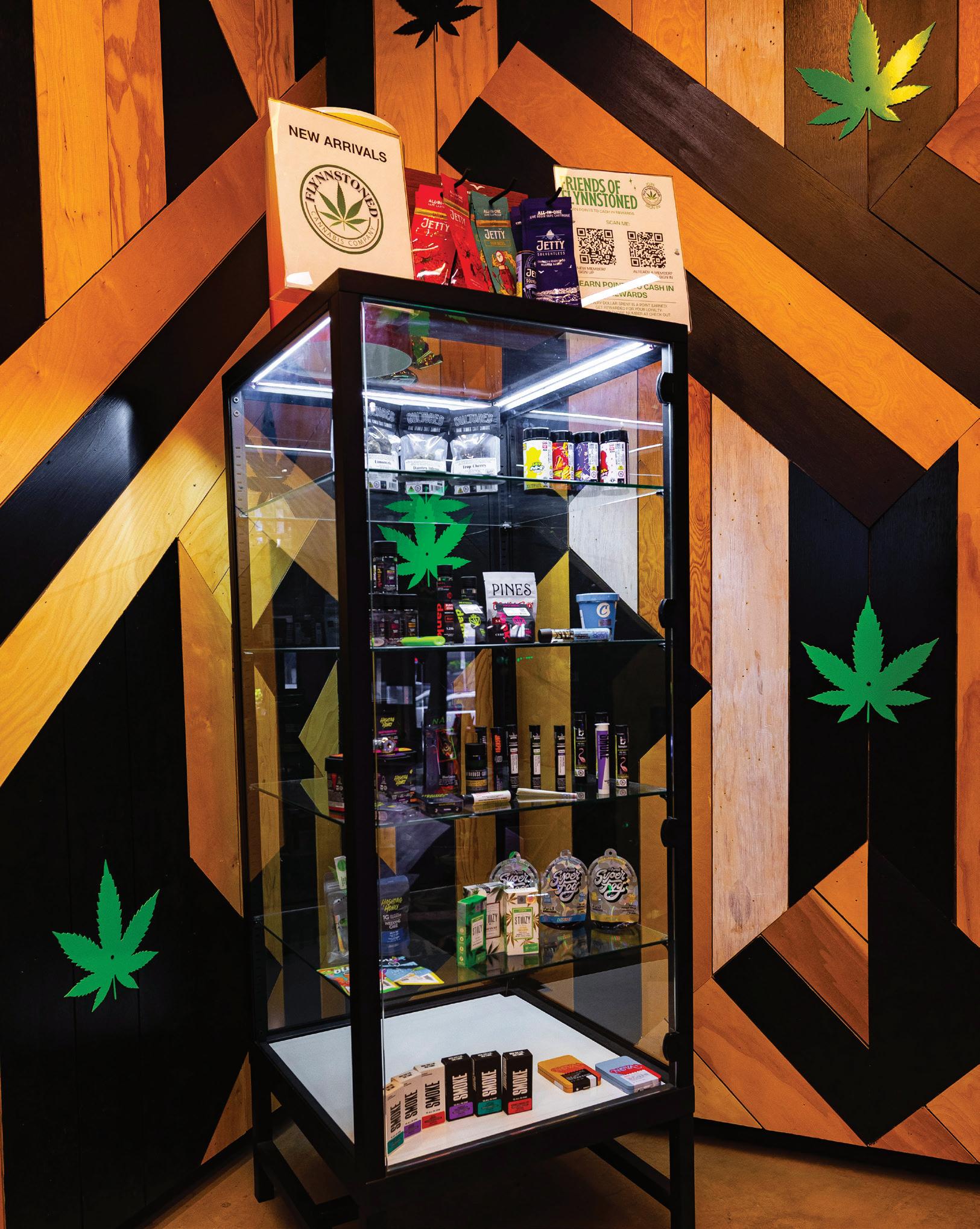
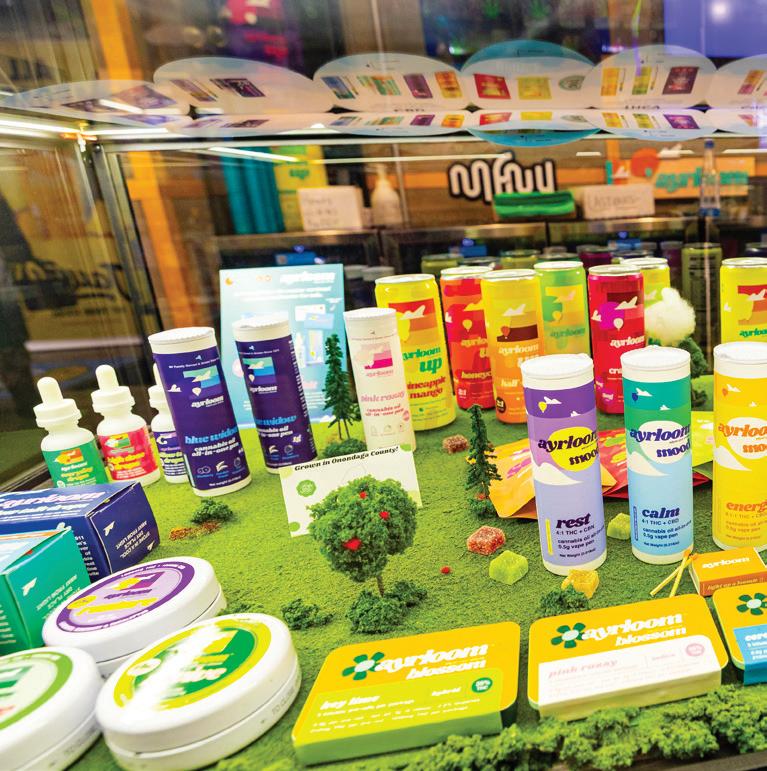

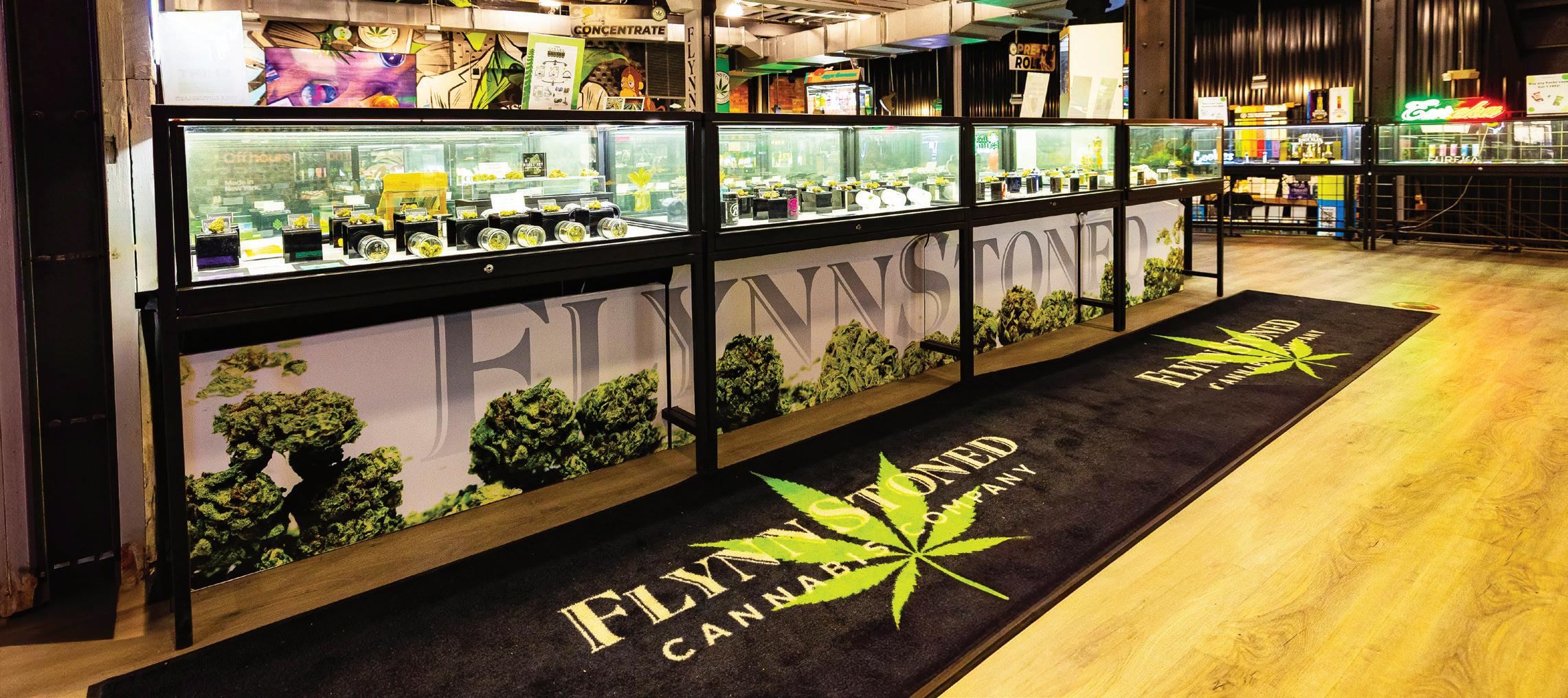
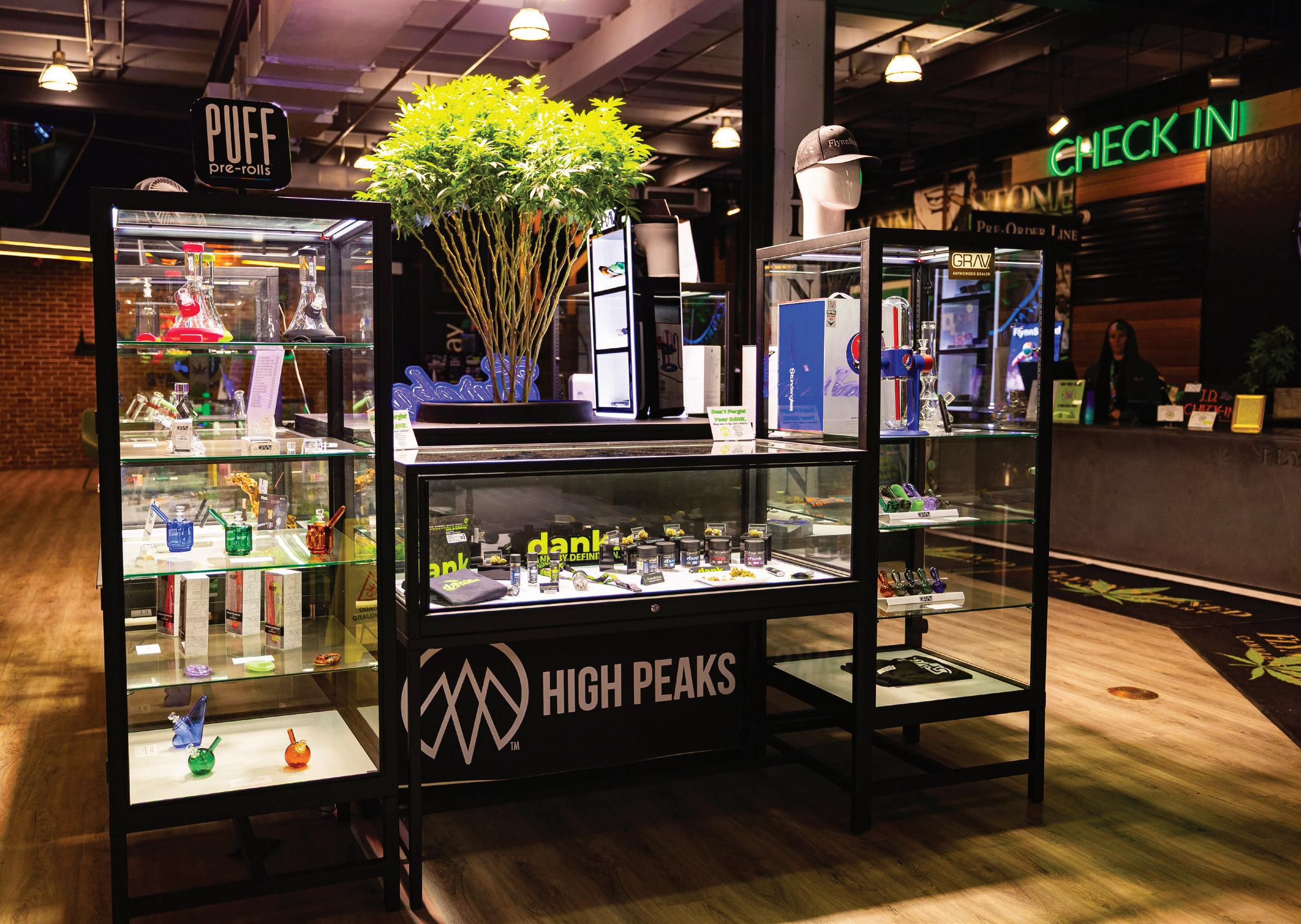
The resulting modular “showcase bank” is one of Display Dispensary’s signature styles. By using stock showcases, the team creates custom configurations with a unique look designed to meet each project’s precise needs. Display Dispensary has employed showcase banks in projects across the United States and international markets, each with its own aesthetic and raison d’etre. “The idea is simple: Let customers make a full rotation and see everything without zigzagging around the store,” Rosenberg said. “It’s more like walking through a high-end department store than an old-school head shop.”
From Flynn’s perspective, the departmentstore vibe is no accident. His background as a roofing contractor came in handy while
he renovated the building himself, adding polished touches like a photo booth and museum-style cannabis-history exhibit to the ground floor, a lounge on the third floor, and a modern, jewelry-store-inspired dispensary on the second.
Display Dispensary matched Flynn’s larger-than-life vision with matte-black finishes, clean lines, and an inventory of ready-to-ship showcases that allowed the megastore to prepare for opening on an expedited schedule. “Mike’s not a guy who likes to wait, and neither am I,” Rosenberg said. “Thankfully, we had the fixtures in stock, delivered them from our Northeast Pennsylvania facility, and his team had them set up within days.”



Beyond the visual impact, the layout facilitates brand discovery, product education, and impulse purchases.
Wall units showcasing branded merch like hats, T-shirts, and other wearable marketing draw shoppers in, encouraging them to leave with not just cannabis but also souvenirs that help spread the FlynnStoned brand.
That brand-spreading is important. If anything, Flynn’s ambition for the future has grown. He’s building out FlynnStoned locations in a former Hallmark store near the United Nations on Manhattan’s east side, in a former adult video store in Greenwich Village, and in a former bank in Brooklyn. In
addition, he has signed or is negotiating brand-licensing deals with about thirty license holders around the state eager to capitalize on FlynnStoned’s vision and massive online presence. Two of those license holders already operate successful FlynnStoned-branded dispensaries in Rochester and Oswego. Display Dispensary is the go-to provider for fixtures and floor plan expertise.
Flynn is proud of all the finished projects. So is Rosenberg. FlynnStoned’s aesthetic is “a modern look, clean and inviting; a space that feels more like retail than ritual,” he said. “That’s what today’s consumers are after, and that’s exactly what we give them.”
A GOOD LOYALTY PROGRAM SAYS “THANKS.” A GREAT ONE SAYS “SEE YOU AGAIN SOON.”
BY TAYLOR ENGLE
Loyalty programs are no longer novelties. As dispensaries and brands vie for consumer attention in increasingly crowded markets with minuscule margins, engaging loyalty programs separate the haves from the have-nots when it comes to repeat business.
The challenge? Crafting and implementing loyalty programs that provide optimal value without the need to offer blanket product discounts by forging meaningful, lasting connections with customers.
Take a page from leading traditional retailers like Sephora and The North Face, two companies that reimagined loyalty through innovation and brand alignment. Sephora’s revamped rewards system includes masterclasses for top spenders and in-person activations for exclusive members. The North Face’s sustainability-driven incentives allow members to earn points for shopping with reusable bags. Both programs resonate with the lifestyle values of the consumers the brands target, highlighting how successful programs deploy outside-the-box ideas.
In today’s market, the most successful loyalty programs offer more than points. They deliver authenticity and foster
a meaningful sense of community that keeps customers motivated to return and spend. A good loyalty program starts with added value: a reason to return to a store or website and connect with a product or service. But what inspires loyalty in a market inundated with options?
For The Artist Tree, a successful loyalty program looks like seamless integration with the rest of the company’s offerings. “The goal of our program is to be woven into The Artist Tree experience,” said Adriana Hemans, marketing director at the California dispensary chain. “Our guides [budtenders] play an essential role in informing guests about rewards during personalized consultations, which ensures the program feels like an extension of the curated journey we provide.”
The dispensaries, which incorporate art galleries featuring local creatives’ work, use in-store touchpoints to highlight the loyalty program in an approachable and engaging way, allowing point redemption not only for purchases but also access to exclusive gallery shows and educational events. According to Hemans, the touchpoint approach is how loyalty became a natural and integral part of the customer experience.
Other companies reap success by partnering with thirdparty rewards programs. A Gelato Canna Co. x CliqueMJ partnership allows Gelato customers to earn cash back and product discounts through the CliqueMJ app. The collaboration grew out of the Gelato team’s fondness for ULINE, where customers may choose items from the catalog based on how much they spend, and CVS, where 30–40-percent discount coupons are a staple of the Extra Bucks program. With discounts and rewards that mirror familiar retail experiences, Gelato keeps customers engaged and incentivized to return.
“Think of it this way: Grocery stores have loyalty programs, but individual brands on the shelf do not. Brands partner with the store to offer value,” said Gelato business development executive Janet Matula. “We are continually ranking number one or two in engagement on CliqueMJ. We’re able to track our customers, the volume of purchases, and where the purchases are coming from.”
Matula is a firm believer in acquiring and using actionable customer data, and she’s not alone. Embarc dispensaries’ Chief Marketing Officer Courtney Zalewski emphasizes the importance of mastering the tech stack, which she considers a critical component of a successful loyalty program. “Spend time up front to map out what your business goals are and how you want loyalty to factor in,” she said. “You don’t just ‘turn on’ loyalty. You have to think through integrations, data, tracking, attribution, and budget. Loyalty isn’t free.”
In fact, Embarc spent six months analyzing its current program to map out an ultimate dream state—loyalty perks and incentives that will play a major role in fueling marketing and brand differentiation going forward. The team plans to roll out the strategy later this year.
“Our customers love our Passport Club program, which comes with everything from exclusive members-only sale days to members-only promotional merchandise,” Zalewski said. “We put a lot of thought behind our program. We talk about Passport Club constantly and monitor our program’s health religiously. It’s core to every aspect of our strategy.”
Gamification also can lead to increased customer engagement, as Zamnesia discovered by incorporating a tiered system into its TRIBE program. Members unlock increasingly valuable exclusive perks as they “level up” by increasing their lifetime spend and completing “bonus giftpoint missions” like leaving a Google review, referring a friend, or following the company on social media.
“We’ve found storytelling and gamification really capture our customers’ attention,” said General Manager Nick Avè. “The TRIBE loyalty program isn’t just about earning points; it’s an adventure. We offer a tiered system that’s visually appealing and designed to make our members feel like they’re part of something special. Our approach is all about creating a community where members don’t just shop; they belong.”
When the team was designing TRIBE, they looked to successful loyalty programs in non-cannabis spaces, like Flying Blue from Air France-KLM. The program incentivizes travelers to continue flying with the airline to unlock tier-based rewards such as free entrance to airport lounges and access to faster lines through security.
“Although we were inspired, many of these programs still lacked that personal touch we wanted,” Avè said. “We took a common platform principle and gave it a distinct Zamnesia flair, customizing it so we can easily adapt to sales pushes or stock needs. This makes our program feel genuinely special and tailored to our members.”
As part of the design and implementation, TRIBE was built to work alongside the brand. “Anytime we’re considering a new project or idea, we ask, ‘How can TRIBE be a part of this?’” Avè said. “Our loyalty program is at the core of how we interact with our most passionate customers and brand advocates. It’s about staying loyal to them as much as earning their loyalty in return.”
And that illustrates another point about good loyalty programs: They constantly pivot—not just for the sake of change, but in response to consumer feedback. “We’re in the process of overhauling our loyalty program, and the changes are directly inspired by feedback from our community,” Hemans said. “While our rewards app has been popular, some customers—especially those with Android devices— faced challenges due to Google’s restrictions on cannabis sales. We don’t want anyone to be excluded, so we’re simplifying the program. Going forward, customers won’t need to use an app to join or enjoy the benefits of loyalty membership. This shift means our program will remain accessible to everyone while staying true to our values of inclusivity and connection.”
The best advice for any dispensary or brand interested in launching a new loyalty program is to “start with your customers.” Spend the time and energy required to understand what drives their loyalty and build everything from there. The building process is never complete, so don’t forget to listen and optimize along the way.
A FRANK CONVERSATION ABOUT EQUITY, OPPORTUNITIES, AND WHY RESCHEDULING ISN’T ENOUGH.
BY ELLEN HOLLAND ILLUSTRATION BY AKMAL
In 2017, when Cat Packer became the founding director of Los Angeles’s Department of Cannabis Regulation, she took on the immense task of establishing and implementing a regulatory program for one of the largest cannabis marketplaces in the world. A law school graduate who previously had worked for the Drug Policy Alliance (DPA), Packer instantly became the face of all the department’s accomplishments and missteps.
After holding the regulatory role from 2017 to 2022, she returned to work with the DPA, where she is now the director of drug markets and legal regulation. In addition to that work, she serves as Distinguished Cannabis Policy Practitioner in Residence at the Drug Enforcement and Policy Center at Ohio State University, her alma mater. Packer says her work in drug policy reform was driven by a quote from Michelle Alexander’s The New Jim Crow: “Nothing has contributed more to the systematic mass incarceration of people of color in the United States than the War on Drugs.” Her recent work has involved uniting with several different organizations devoted to restoring injustices caused by the drug war including the Last Prisoner Project, United for Marijuana Decriminalization, Students for Sensible Drug Policy, NORML, and Supernova Women.
An expert in cannabis law and policy, Packer is recognized as the first person of color to lead a cannabis regulatory program in the United States As a founding member of the Cannabis Regulators of Color Commission, she works to develop an ecosystem for others who are tasked with managing the implementation of medical and adult-use programs across the nation. mg Magazine connected with her to discuss legalization and regulation through the lens of social justice reform.
Why does the industry need equity programs?
I think all we’ve known thus far in this country in terms of cannabis polity has been inequity, and it’s my belief the government that caused the harm due to criminalization has a responsibility not only to acknowledge that harm but
also to establish and implement policies that end and repair existing harms—and prevent future harms and disparities— whether it’s in public health, legal access, enforcement, or economic benefits and opportunities. It’d be the same thing if you caused a fire and someone’s house burned down. You’d expect there to be support to help rebuild that house.
In particular, in thinking about criminalization, it’s no secret that in this country cannabis was made illegal to target Black and brown, Latino, and indigenous communities. The government was successful in that effort in every nook and cranny of the United States. We know this has disrupted individuals’ lives. It’s disrupted and torn apart families. It’s been a reason for divestment in communities.
Even despite the challenges we’ve had with the implementation of some of the programs, we’ve demonstrated already that we can change laws and policies. We can acknowledge these different reforms and disparities. Particularly when there’s support, we can reinvest dollars into these communities. I think everyone stands to benefit from these programs if they’re appropriately designed.
I do think there’s been a bit of misappropriation of the term “equity” over the course of the past decade. My colleague Shekia Scott, who previously ran the State of Massachusetts’s social equity program—she’s now the senior cannabis industry manager for the City of Boston— always says “equity is not a program,” and I agree with that wholeheartedly. We’re not actually going to dig ourselves out of systemic harm by one program alone. That’s why it’s so important—more important than equity programs— that we have leaders and actual policies that are fair and equitable. But I think through these programs that have existed we’re able to pilot how we can, through government, provide oversight to ensure we’re not leaving people behind and in prison for the same reason [multistate operators] and large commercial cannabis companies are making hundreds of millions of dollars.
We’ve been able to demonstrate that we don’t have to arrest people for cannabis use, but part of the challenge is that, at least in some spaces, this concept of equity is kind of singularly tied to opportunity in the industry. And I think—at least over time, as my understanding of this has evolved and I’ve connected with other folks who are
doing equity work, not just work in cannabis social equity programs—there’s a real need to assess all these policies to ensure they’re fair. Not just how we’re designing markets, but to make sure people who use cannabis are protected from discrimination in housing, education, and employment. That’s equity. It’s equitable when we are able to determine whether or not someone is going to be losing their housing rights because they consume cannabis.
There’s an opportunity to continue to improve these programs, but I think these programs are necessary, in part, because we continue to see real-life consequences and harms and disparities. If there weren’t these existing harms and disparities, enforcement in the market, tax revenue, we wouldn’t need these individual types of efforts. And again, I think these programs are not enough. They really do need to be systemic efforts to acknowledge and address harm, but they’re a demonstration of what we can do and we should continue to build on them.
How can the industry’s social equity perspectives and programs evolve?
I’ve noticed this in particular in lobbying and getting to see how large corporate actors lobby at the national level. There seems to be, at least in some instances, a real disconnect between the industry and the movement. I say that in part because, for example, the piece of federal legislation the industry continues to push as its top priority is not even a cannabis-industry bill. SAFER Banking [the Secure and Fair Enforcement Regulation Banking Act] is a banking bill; it’s not necessarily a cannabis bill. And at the same time, we continue to have people all across the U.S. who are dealing with the consequences of cannabis criminalization.
I would like to see the industry wholeheartedly embrace that it is not going to be successful in the market, in policy reform, unless it includes and prioritizes the interests of consumers and patients and veterans and Black and brown communities and indigenous communities in a meaningful way. In a way that doesn’t just pay lip service to those types of values, but is demonstrated in the actual policies that are supported and different ways compromises are made and negotiated when decisions are being made.
Particularly right now, in a moment where there are lots of attacks on equity and inclusion, it’s going to be important for the cannabis industry to remember it’s not an industry. This is a movement. It’s a movement that essentially was built off the backs of the LGBT community, because it was AIDS patients who were fighting for access to medical cannabis and medical cannabis patients are providing opportunities for the industry. So, we can pay homage to these stakeholders— and also, again, communities who have borne the brunt of cannabis criminalization.
I do think there is an opportunity for unity and, in reality, I think we’re going to be able to advance reform that at least is less harmful to as many as possible if we work together. But in order for that to happen in earnest, corporations are going to have to recognize they can’t continue to put their profits over the interests of people. So, we continue to say “people over profits” in the space. That’s part of what’s necessary for the industry to evolve, particularly in this moment. We’re in a moment where the American people are with us, I think. There’s just a disconnect between the people and the leadership in this country, and we could do a better job as a movement of raising the issue profile of legalization for the everyday patient with members of Congress. And I don’t think we do that by focusing on commercial interests. We do that by focusing on the people themselves, how they’re impacted, how veterans are impacted, how mothers are impacted, how this impacts educators and folks who are doing research. We’d have gotten a lot further if we had done that previously, and I think the only way we get further at this moment is by building a coalition and advancing policy that works for the coalition.
Because I heard the term and I was like, “What is that?” Somebody looked at me and said haphazardly, “Black is criminal and black is illegal, and white is legal.” Okay, we can’t use this term anymore. I even used it until I heard the term “white market” and started to think more critically about just the terminology we’re using and what it means if we’re equating black with criminal, particularly in this
context. We know Black and brown folks have borne the brunt of cannabis criminalization.
I don’t think that word association is necessary. When I hear it nowadays I try to ask folks, “What do you mean?” A lot of the time they mean unregulated; they mean unlicensed. And I just encourage them to say what they mean instead of trying to use a criticism descriptor. I don’t think it’s necessarily as helpful anymore, because there’s so much nuance associated with the market. There are people who are licensed who are engaging in illegal activity. There are operators who, because of decriminalization, can grow and share cannabis, but they’re not necessarily part of the regulated market. I think we’ve come too far to use such simple terms at this point.
That term, in particular nowadays, feels like a dog whistle of sorts, in part because it’s always coupled with “we need to eliminate this; we need to crush this.” In reality, if we want to transition consumers—particularly right now, when we’re still seeing a market dominated by white men—we really should be doing everything we can to weaken barriers for access so we can have more of these operators from the unregulated, unlicensed legacy market participate in the licensed and regulated market.
What are your thoughts about federal rescheduling?
I worked in a coalition called United for Marijuana Decriminalization over the course of the past two years to educate folks about the rescheduling process, to really let folks know rescheduling is not enough. Rescheduling in no way ends criminalization. Patients, adult-use consumers, medical marijuana businesses, adult-use cannabis businesses, and the state programs these businesses and consumers and patients participate in will be just as illegal if rescheduling happens as if it doesn’t. In part, this is because the rescheduling process is an administrative process. Essentially, rescheduling would require the federal government to acknowledge marijuana has a chronicled use, that it has a lower abuse potential than Schedule I and Schedule II drugs.
There are some recommendations that are sort of indirect but consequential, like 280E. That’s the [Internal Revenue Service] code that says if you’re engaged with a Schedule I substance that you’re unable to claim [certain business] tax deductions. So I’m not one to say rescheduling is inconsequential, but DPA, the allies that I was on [Capitol] Hill with last week, the Cannabis Unity
Coalition, we continue to say rescheduling is not enough. This is not a solution to the drug war. It’s not a solution to actually end or address the issues that everyday Americans are experiencing because of cannabis criminalization.
When the Biden administration initiated this process several years ago, when the proposed rule was announced, they allowed for, I think it was, a sixty-two day public comment period. And one of the things I’m most proud of in this effort is that DPA and others—this coalition— we launched an online tool to help folks submit public comments directly to the [Department of Justice] and [Drug Enforcement Administration]. And, as a result of this public comment tool, there were a record number of public comments that were submitted on drug scheduling. We saw, I want to say, 43,000 public comments submitted in total, but more than 25 percent of those public comments came directly from the portal DPA and my colleagues and I created. So we were able to mobilize 10,000 people across the country to engage in the public comment process.
When we did early analysis, we found approximately 69 percent of the public comments that were submitted called for descheduling; called for reforms beyond rescheduling. Seventy percent of those public comments called for decriminalization. The analysis also indicated 40 percent of public comments mentioned things like criminal justice reform and social justice. And so we know the people are on our side when we say rescheduling is not enough.
We’re not necessarily sure what the outcome of this process will be, but we’re trying to prepare for a scenario where, even if rescheduling happens, our work doesn’t end. And, depending on how it’s messaged, it could make things a bit more complicated if folks actually think [rescheduling] is a solution.
I can tell you by just the meetings I had with members of Congress last week, there’s a real need to educate our policymakers on the different challenges and what [rescheduling] would mean and how [it would] impact folks. I wouldn’t want policymakers—or even everyday Americans—to see a headline that says “marijuana has been rescheduled” and think anybody got any new rights. I wouldn’t want people to think they can do anything new, because they [wouldn’t be able to]. We still would need, and do need, Congress to act. It was Congress that passed legislation to criminalize cannabis in the first place.
There are opportunities for the Trump administration to take action to lessen those harms. We really need
Congress, both Republicans and Democrats, to listen to their constituents and implement policies that are actually going to protect people who use cannabis responsibly instead of criminalizing them and providing new oversight to a disparate illicit product.
Do you think we’ll see federal legalization? If so, when?
I have doubts that we will see it in this Congress, in part because Republicans are in charge and I really just haven’t seen anything to date that demonstrates the Republican Party is ready to take this issue up in an earnest way. Because this is an area of policy that has always been politicized, I wouldn’t write out the possibility of reform. We know we’re going to have midterm elections [next year] and a presidential election in four years. Regardless of
"a concern that, based on some of the other moves the administration is making, even if we were to see some type of reform advance in this Congress under a Trump administration, it wouldn’t be the type of reform that would benefit everyday Americans. It might be the type of reform that would benefit large corporate actors and folks who had access to the stock market, for example. And so I think those are still things to be wary of. Even right now, when legalization may seem several years away, there’s still an opportunity to think critically and actually improve bills.
On one hand, if we were to pass some type of legalization policy tomorrow—if the government tried to regulate cannabis tomorrow—we’d be in trouble, because we still have a lot of work to do to make sure we don’t set up something at the federal level that’s just going to create new types of harms. We actually know because of experience
IS A MOVEMENT.
the party, if politicians were being smart, they would align themselves with their constituents and actually enact policies their constituents want them to enact. But short of President Trump himself directing his party to take a position, I don’t know that we’ll see the Republican-led legislature advance bills that would actually decriminalize cannabis. By the way, Trump himself—I guess this is just in a Truth Social post, but everybody’s pointing to it right now to try and figure out what Trump’s position is—noted he didn’t think people should be arrested for small amounts of marijuana and he supported states’ rights, so you can take that for what it is. We’ll see what the administration’s [position on] reform is while in office. But there’s also
"we’ve had at the local and state level that we should be taking these lessons learned and using them to inform whatever our federal approach is.
So my strategy in the short term is to continue to look at these bills that are advancing as opportunities to educate members of Congress. But for states and stakeholders who are in states that have passed policies or are hopeful for policies, I don’t think a federal cavalry is coming. And I think there’s going to be a need, an increased need, for state legislatures or state leaders and regulators to take action to protect what they’ve done at the state level and to improve what they’ve built, because I think federal reform—at least decriminalization, legalization—may still be a ways off.
BY MACEY WOLFER




Despite good intentions, social equity efforts across the United States often fail to deliver meaningful support to the very people they’re meant to uplift.
Can that change?
In 2019, Illinois simultaneously legalized recreational cannabis and launched a statewide social equity program aimed at equalizing access for justice-impacted individuals and marginalized groups. The rollout quickly became tangled in lawsuits—a now-typical occurrence—delaying issuance of the first license until 2022. Similar scenarios have played out across the country as more states look to repair the harm done by the war on drugs.
While Illinois was the first to incorporate a statewide program as part of adult-use legalization, social equity efforts already had taken root across the nation, some more successfully than others. Massachusetts implemented what is generally acknowledged as the first statewide social equity program in January 2018, more than a year after voters legalized a recreational market. Before that, beginning in 2017, Los Angeles, Oakland, and other California cities launched local initiatives to boost equity.
Today, the majority of states that have legalized recreational cannabis either included social equity provisions in their enabling legislation or retroactively implemented programs years later. Each program is unique, with no universal definition or provisions. Common features include preferential licensing, financial assistance, criminal record expungement, and operational support.
Qualifications for applicants vary across programs, too. Typical requirements include residence in areas of disproportionate impact, previous cannabis-related convictions, membership in a racial or ethnic minority, and military veteran status, to name a few.
The lack of a cohesive definition of “social equity” or global set of program objectives has spawned its own set of issues. Who qualifies and what support should exist? Who really gets a slice of the pie? Scan the internet and you’ll see disdain for programs that fall short while oversight agencies give lip service to vague goals alongside success stories about businesses that couldn’t have succeeded without a program’s support. This paints a confusing picture.
Here’s what we discovered by speaking with people on the front lines across the United States. What’s working? What’s not? What’s next?
Beatrice Carranza, founder and chief executive officer at Colorado-based edibles brand BACHAZ, heard about the state’s then-two-year-old social equity program through word of mouth in 2022. “I was like, ‘Wait a minute. All of those qualifications are talking about my story,’” she said. “The struggles we faced as a family for possession. It affected us and followed us through many years.”
Carranza recalls a smooth application process. She submitted all the requested documents and waited weeks to months between rounds of correspondence with the state. When eventually she was approved, she
felt both vindication and validation. “When [cannabis] was first legalized, we got pushed away,” she said. “Everything in my past had affected me and not given me that opportunity. Getting this license was a gold ticket. Now things were real.”
Michael Marinaro, too, was approved with ease. “I was accepted almost instantly when I wrote my story,” said the founder and CEO of Massachusetts-based brand BadaBloom.
The application and licensing process has not been as smooth for everyone, though. Kennis Littleton, founder of Canna Gemz, is among the 776 social equity license applicants in Minnesota. Since November 2024, he has awaited lottery results from the state’s Office of Cannabis Management (OCM). Twice delayed by court action including lawsuits alleging some applicants were improperly disqualified and others represented “straw men” designed to game the system, the lottery to fill 249 social equity slots was expected to take place in June.
For Belicia Royster, the process was even more frustrating. Hers were among the applications for Illinois’s first points-based lottery. Although she partnered with multiple existing companies and entrepreneurs from California, “none of these opportunities turned into a license,” she said. The experience inspired her to found the Social Equity Empowerment Network (S.E.E.N.) and become a plaintiff in a lawsuit about the process.
Legislative wrangling skewed the Illinois lottery’s results by awarding extra points to military veterans, Royster believes. “It basically turned into a veterans program because of the points game,” she said, leaving many prohibition-impacted applicants without a high enough score to qualify. “If you weren’t a veteran and social equity, you weren’t going to get [a license] because you were missing out on those points.”
Learning from experience, she enlisted a veteran friend’s partnership for the next round. However, since the state didn’t put a cap on the number of


applications, the pool became flooded with more than 4,000 applications from wealthy, well-connected entrepreneurs, including many out-of-state players, she said. “You get all these rich people partnering up with social equity applicants who can afford to put in fifty applications, whereas regular people like me could only put in a couple,” said Royster. “They were essentially giving out seventy-five dispensary licenses to twentyone connected people with perfect scores.”
Eventually, Royster received two craft cultivation licenses. But “two years later we’re still not operational, because the money has dried up,” she said.
Acquiring a license through a social equity program is just the first step. Once applicants have completed that leg of the journey, becoming—and staying— operational presents another complicated array of challenges. Social equity license holders are no different from other licensees when it comes to one basic business necessity: funds.
“While the licensing barrier is lower for social equity entrepreneurs, none of the [other barriers] are lower,” said Shannon Donnelly, executive director for the Center for Social Equity Support in Colorado. “We’re always going to run into the barriers of running a small business.”
Donnelly has been consulting with social equity entrepreneurs since 2018. Justice-impacted herself, she previously worked as a cannabis process navigator, a position in which she created programs to assist social equity entrepreneurs. After leaving her regulatory role, she started the Center for Social Equity Support to provide mutual aid and incubators for social equity businesses. She believes the social equity programs with funding built in from the beginning are headed in the right direction.
“Colorado had ten years of legalization with established businesses before we looked at social equity,” she said. “But states on the east coast, like
New York or Massachusetts, have actually built money in to support these businesses from the ground up. Programs with funding built into them do better overall for entrepreneurs.”
But funding is not always easy to come by in these programs, even in states that appear to have prioritized financial aid for license winners. In Massachusetts, social equity entrepreneurs can access an “immediate needs grant” to jumpstart operations. Marinaro used the resource to pay rent and other BadaBloom startup costs. But the grants don’t cover attorney fees or construction costs, which also come with hefty price tags.
The state separated the grants program into four tiers: the first for entry into the industry, the second for imminent or outstanding expenses for essential business operations, the third for acquisition of final licensure and start of operations, and the fourth for funds to improve and expand the existing business.
BadaBloom was approved for a $50,000 immediate needs grant and received the money right before Christmas 2024. “It was the best gift I’ve ever gotten in my life,” Marinaro said.
After the depleted fund was replenished in early 2025, Marinaro received an additional $250,000. Alongside his gratitude for support, he emphasized that BadaBloom and other businesses still need much to achieve success. “I could have spent my $250,000 in about three minutes,” he said.
BadaBloom, like many others in Massachusetts, had been brand-building for a long time before any funds became available. “We were ready to go the whole time, just trying to make rent and mortgage, stay alive, and not go under,” Marinaro said. “A lot of small companies went under. I believe some of those companies would still be alive if that fund had come back online earlier.”
As Littleton awaited the lottery results in Minnesota, he remained hopeful about access to capital. In March, the state’s Department of


Employment and Economic Development announced two new grant programs to fund social equity businesses. “As they roll out these programs and they become more readily available, it’s going to be good,” he said. “Minnesota is usually very good about these types of programs.”
For Carranza in Colorado, recent access to capital has had a positive impact, though she echoed others in saying her business could use more financial help. The first grant she received totaled $25,000 to help with operational costs of starting the business. Then she received a second grant to assist with packaging and expansion, followed by a recent $20,000 grant. “I wouldn’t be here if it wasn’t for that,” she said. “It’s not a lot of money compared to other states, but I have been able to work and stretch [the grant funds] out as much as I can. Can you just imagine if we had more money and resources?”
In May, Carranza was gearing up for a pitch-deck competition that will grant three existing businesses $50,000, $75,000, or $100,000. Hosted by the Colorado Office of Economic Development and International Trade, the Cannabis Business Pitch Competition was open to Colorado licensees with at least 51 percent social equity ownership.
As for Royster, who is based in Illinois but has worked with social equity programs across the nation, she believes there needs to be more reinvestment of cannabis tax revenue into social equity businesses. More than a dozen state agencies—from the Department of Agriculture to the Department of Financial and Professional Regulation—are involved in the Illinois industry in some way, and they all have their hands in the same pot. “That needs to be streamlined in order for some of these funds to trickle down to the program that they designed and is failing,” she said.
She recently spoke at the state capital during a Department of Agriculture celebration of Black cannabis farmers and the billions of dollars the
industry has contributed to state coffers. “It’s all smoke and mirrors,” she said. “Those billions didn’t make it to social equity businesses. So how can we fix that? I want to challenge every state to make sure that when creating this lane for small businesses in a big pond, we make sure everybody eats.”
While many of the big issues plaguing social equity programs across the nation could be alleviated to some extent by more access to capital, several other factors also are at play. Predatory practices and alleged gaming of the system are continuing sources of controversy.
For years, social equity programs have been plagued by predatory investors offering to form partnerships with social equity applicants. The investors often provide financial assistance or fully fund an operation, ostensibly helping social equity applicants get the foundation they need for success. But these partnerships often end with the investors taking control of the business by either buying out or casting out the original social equity applicant. The scheme can provide multiple benefits for the non-equity partner, including reduced licensing fees and priority in the application queue.
Predatory licensing arrangements have been around since the inception of cannabis social equity programs, with media mentions going back to at least 2018. As more states create programs, these types of agreements will continue to try to gain an unfair advantage.
Arizona’s industry garnered a lot of negative attention because of predatory practices impeding the success of the social equity program. In June 2024, the Arizona Center for Investigative Reporting revealed Alicia Deals, the first Black woman to run a social equity dispensary in the state, remains one of the few equity license holders to retain 100-percent ownership of her business. Attorney Jimmy Cool told digital newsroom Arizona Mirror the state’s program sets up licensees to fail, so many equity license holders either enter


predatory partnerships or sell their multimillion dollar asset to corporate dispensaries for “a few hundredthousand dollars.”
Missouri was also hit hard by such practices. Last year, regulators rescinded more than thirty microbusiness licenses because of their connections to groups or individuals who had flooded the lottery with predatory partnerships.
Arizona and Missouri are not alone. Delaware’s Office of the Marijuana Commissioner posted a warning last year: “The Office of the Marijuana Commissioner (OMC) has received reports of outof-state entities contacting potential social equity applicants in Delaware. These entities may be trying to trick you into paying for help securing a social equity license.” The notice warns against paying upfront fees for obtaining a license and cautions potential applicants to beware of “unsolicited calls, postcards, or emails promising to guarantee a license.”
Marinaro said he’s been approached by investors with dishonest motives. “Being a social equity applicant, you just have predatory people always trying to attack you,” he said.
Finding support, particularly on dispensary shelves, is also a struggle for some social equity brands. Carranza said she sees dispensaries claim to support social equity brands, but the content of their shelves tells a different story. “It’s more of the big guys. Who is paying more to have their product in the dispensary?” she said. “I’ve heard some of the big brands are paying up to a dollar for each sale. You’re obviously going to sell the products that make you commission.”
Donnelly created a Cannabis Cares Program at the Center for Social Equity Support to address this issue. The organization provides badges to businesses that give back to their communities, including a social equity supporter badge. “If I can get a dispensary to care about having a shelf for social equity entrepreneurs, then that’s a win for me because those entrepreneurs have a pipeline to revenue,” she said.
If one thing is clear about social equity, it’s that nothing is truly clear. Each state’s regulators run their own programs and seemingly are learning as they go.
As Littleton noted, “It’s very much a ‘building the plane as they fly it’ type of situation.” He credits other social equity entrepreneurs for keeping his spirits up through networking mixers and events. He also gives kudos to the Minnesota Office of Cannabis Management for its support. “They’ve done a wonderful job of creating tools, videos, webinars, and other communications,” he said.
Carranza said both funding and regulations need to change for a better future. She pointed to securing real estate as a particularly challenging aspect of getting a business off the ground. “You need to have the establishment before you can get the business license,” she explained. “It took me over a year and a half to get approval. I’d get a yes, and then once they heard ‘cannabis’ it was a no.”
Royster believes changes on a federal level must happen for more meaningful change to happen downstream. “I’m sure it’s far from happening, but I’d like to see the federal government support smaller businesses that are in this space so harm doesn’t continue to happen,” she said.
For Donnelly, regulatory modifications are key, too. But she also said it’s important to look at the larger picture. “We have to change the way we look at success in these programs,” she said. “A lot of people ask me about social equity and I turn the question around and say, ‘Is small business working in America?’ If we don’t think small business is working, how do we expect that a small business that is disadvantaged in multiple different areas is now going to get over barriers that a [traditional] small business can’t even get over?
“It’s the same with regulations,” she added. “If we just loosened regulations on small businesses as a whole, social equity would rise.”


No matter the size of your business, you need a customer relationship management (CRM) system of some kind. Whether the system comprises index cards in a shoebox or a fullfeatured software platform, CRMs can help companies propel sales growth and drive revenue by tracking and organizing customer interactions, streamlining communication, and enhancing customer engagement. Often supporting automated emails, customer purchase profiles, and loyalty programs, the platforms exist to help build meaningful, long-term relationships with consumers.
For the cannabis industry, the tricky part of adopting a CRM has always been finding a platform that supports the industry’s unique compliance needs. But in 2025, CRM software is more tailored than ever before. Dispensaries and other operations no longer are forced
to turn to traditional software-as-aservice (SaaS) platforms built for broader markets. Although mainstream giants like Salesforce, HubSpot, and NetSuite remain viable options—primarily for larger companies and multistate operators (MSOs) due to their expense—many cannabis-specific solutions now offer deep integrations with point-of-sale (POS) systems, compliance tools, and loyalty programs, making them a more seamless fit for plant-touching businesses.
That said, some operators—especially those hiring talent from outside the cannabis space—may prefer mainstream CRMs, given their widespread adoption and familiarity. But for businesses looking for software designed with industry-specific requirements in mind, an increasing number of focused CRMs are available, often as add-ons to larger SaaS platforms.
BY TAYLOR ENGLE
One of the most crucial features for dispensaries is the ability to connect its CRM with its POS system. That way, every customer transaction is automatically logged, which helps with compliance tracking, inventory management, and data accuracy. It also allows budtenders, newsletters, and other touchpoints to provide personalized recommendations, sales promotions, and rewards to customers based on their purchase history.
A good CRM also centralizes all customer data, giving operators a 360-degree view of each consumer’s buying habits, preferences, and interactions. From there, businesses can segment their audience and send targeted promotional campaigns. This makes for better customer engagement, but don’t expect great results overnight. It takes time to fine-tune strategies.
Many cannabis-specific CRMs also come equipped with built-in loyalty programs that incentivize repeat business. These programs allow dispensaries to offer rewards like discounts, buy-oneget-one deals, or exclusive access to sales events. Loyalty programs are a powerful tool to keep customers coming back, but implementing them properly requires thoughtful planning.
Automating certain aspects of marketing—such as follow-up emails, text messages, or push notifications—can save time while increasing engagement. A CRM should be able to schedule messages, track responses, and adjust campaigns based on customer actions. However, no CRM can magically create perfect campaigns.
You’ll still need to invest time in writing compelling content and setting up effective, tailored workflows.
As for compliance, a CRM with builtin compliance tools helps ensure planttouching companies adhere to all relevant regulations when it comes to customer records, sales tracking, and reporting. This is where cannabis-specific CRMs truly shine, by natively incorporating features that mainstream platforms like Salesforce and HubSpot don’t.
Lastly, built-in analytics are key to understanding what’s working and what’s not. A CRM should provide customizable dashboards that allow businesses to track sales trends, monitor campaign performance, and assess customer behaviors. But these insights won’t be fully optimized right away. Optimization is a process that requires gathering data, adjusting strategies, and refining what works best for your business.
A great CRM doesn’t work in isolation. It’s meant to integrate with other software and tools you’re already using, whether those include a POS system, inventorymanagement software, or financial tools. Look for CRMs that offer easy integration with industry-specific tools like compliance trackers, marketing platforms, and inventory systems. These integrations make CRMs powerhouses that streamline operations, automate tasks, and free up the team to focus on customer relationships.
Most CRMs can handle a lot, but don’t expect a “set it and forget it” experience. The platforms require a good amount of setup, customization, and ongoing maintenance to optimize them for maximum performance.
If you’re considering a CRM for your business-to-consumer (B2C) or business-to-business (B2B) company, here are some options with staying power.

Calling itself an “all-in-one ecosystem,” IndicaOnline is a dispensary-specific solution that goes way beyond CRM. In addition to robust traditional features like detailed customer profiles, email and SMS marketing, an integrated loyalty platform, and a discounting system that allows customer grouping, the ecosystem incorporates a POS with hearty e-commerce capabilities and cashless-payment processing, a “smart” delivery suite that includes a driver app, and a distribution platform with RFID inventory tracking, back-office management, and real-time compliance reporting via Metrc integration. It’s a comprehensive tech stack in a box.
B2B and B2C
Cost: contact for quote
Integrations: compliance, e-commerce, payment processing
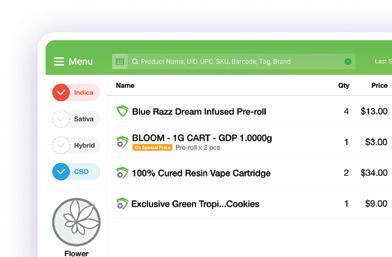



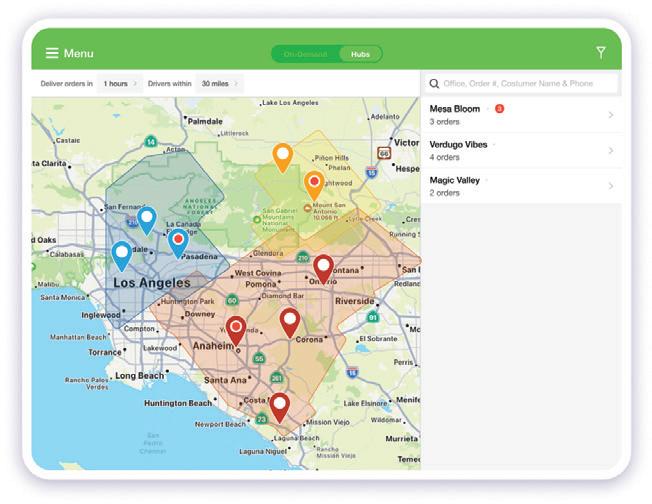

A cannabis-specific enterprise resource planning (ERP) platform with a builtin CRM, Distru provides an all-in-one view of customer and order data. It’s notable for its features to manage inventory, sales, compliance, and production processes. If your business requires a centralized system to oversee complex operations from cultivation to distribution, Distru is worth a look.
B2B
Cost: contact for quote
Integrations: POS systems, e-commerce, accounting, compliance, cultivation management
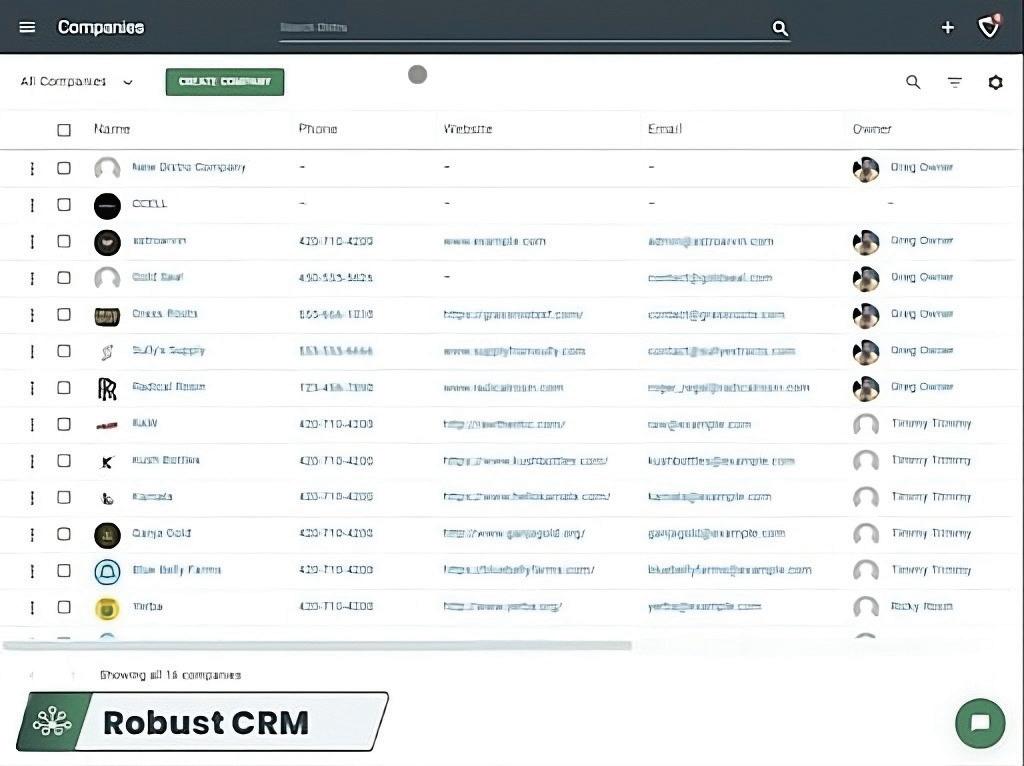
Outfield’s tailored-for-cannabis CRM stands out for its deep focus on B2B, making it a popular choice for businesses that need to manage relationships with retailers, distributors, and wholesale clients. The platform excels at tracking sales pipelines, streamlining communication, and enhancing productivity for suppliers. If you’re managing large-scale B2B relationships and need a CRM that offers customizable workflows and integrations, this platform is worth a test drive.
B2B
Cost: varies based on features
Integrations: more than 5,000, including POS systems, inventorymanagement software, accounting
Springbig’s greatest strength is its comprehensive marketing tools tailored to enhance customer engagement and retention. It’s particularly well-suited for dispensaries and retailers aiming to strengthen customer relationships through personalized marketing campaigns. If your business is on the hunt for a CRM solution with robust marketing automation and loyalty program features, Springbig’s system is a strong contender.
B2B and B2C
Cost: varies based on features
Integrations: POS systems, e-commerce, analytics, payment solutions providers
An e-commerce platform with a CRM component, Dispense is particularly well-suited for dispensaries aiming to enhance their online presence and streamline operations. The platform offers features to help businesses understand customer behavior and improve engagement. If your business is looking for a solution to manage online orders, customer interactions, and integrate seamlessly with existing systems, Dispense may have what you’re seeking.
B2C
Cost: starts at $500 per month
Integrations: POS systems, e-commerce, delivery management, loyalty programs, marketing
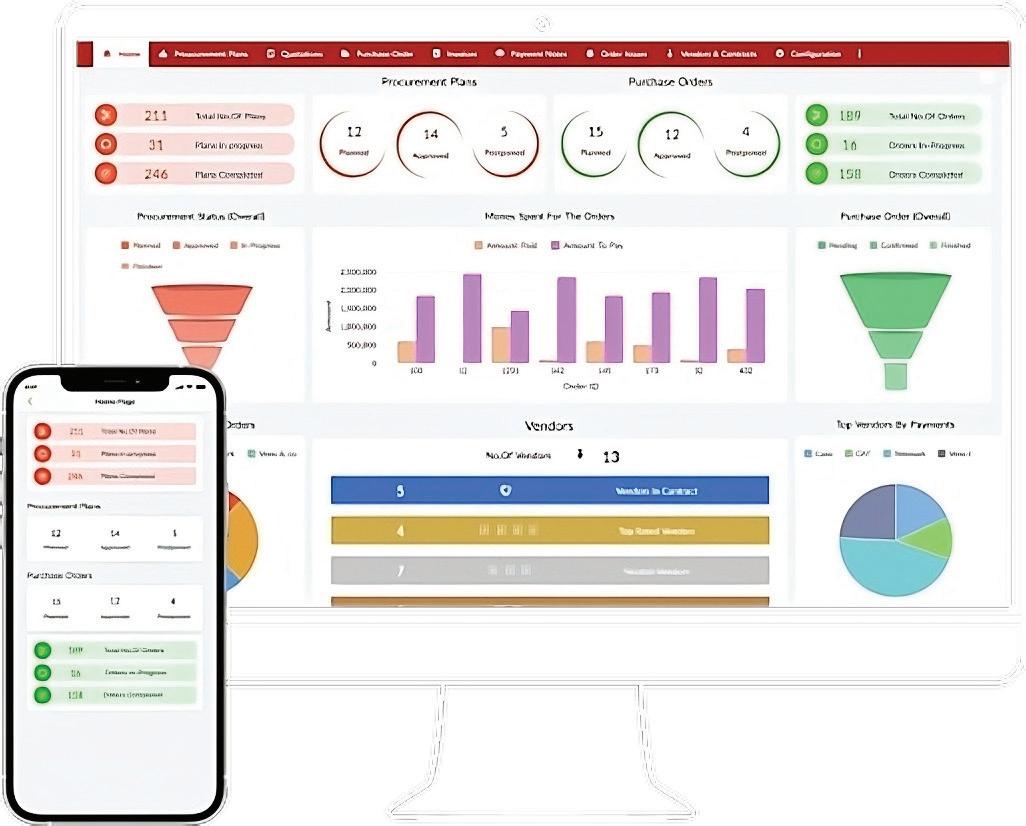
A powerful yet affordable solution, Zoho is designed for small to medium-sized businesses. The platform differentiates itself with a robust set of automation tools, including workflows, lead scoring, and artificial-intelligence-driven predictions. With its intuitive interface and scalability, Zoho is an attractive option for B2B companies looking to enhance customer relationships without the complexity or cost of larger platforms.
B2B
Cost: free to $52 per user per month
Integrations: more than 200, including team workspaces, help desk, marketing
365 Cannabis distinguishes itself by offering a comprehensive ERP solution comprising six modules covering finance, distribution, cultivation, processing, retail, and customer relationships. The platform takes a 360-degree approach to supply-chain management, making it an appropriate choice for vertically integrated businesses that need complete visibility and traceability from seed to sale. Financial and retail-management tools are particularly robust.
B2B and B2C
Cost: contact for quote
Integrations: Microsoft applications and Microsoft Dynamics 365 Business Central partners
Primarily a POS and delivery platform for California, Massachusetts, Michigan, New Jersey, New York, and Washington D.C., Meadow incorporates robust CRM capabilities tailored specifically for retail. If your dispensary aims to leverage data-driven marketing strategies to enhance customer engagement and sales—and you operate in the company’s limited markets—Meadow may be a good choice.
Cost: contact for quote
Integrations: e-commerce, accounting, analytics, marketing
A wholesale operations platform for buyers and sellers, Apex Trading incorporates a CRM offering a streamlined solution for managing customer relationships, sales orders, and inventory. User-friendly and designed specifically for B2B cannabis businesses, the platform can help enhance communication, optimize sales workflows, and improve customer satisfaction while staying compliant with industry standards.
B2B
Cost: contact for quote
Integrations: ERP, accounting, compliance

A suite of powerful marketing-automation tools set HubSpot apart, helping businesses streamline lead generation, email campaigns, and customer engagement. The platform’s ease of use, combined with a wide variety of integrations, make it a popular choice for businesses looking for a user-friendly CRM that can grow with their needs. An artificial-intelligenceenhanced version adds functionality.
B2B and B2C
Cost: free to $1,300 per month
Integrations: more than 1,700, some of which are industry-friendly
Salesforce is a top-tier CRM for enterprises that need a robust, scalable solution. Extreme flexibility, advanced analytics, and an extensive list of thirdparty integrations (including Metrc) set the platform apart. With tools for sales, marketing, and customer service, the platform can help businesses streamline processes, improve customer engagement, and scale operations.
B2B and B2C
Cost: $25 to $100 per user per month, plus two additional tiers that require quotes
Integrations: more than 3,000, some of which are industry-friendly
An intuitive solution known for its user-friendly interface and visual sales pipeline, Pipedrive helps businesses track deals, automate tasks, and maintain a clear overview of the sales process. The platform was an early collaborator with cannabis businesses, recognizing the industry’s need for a CRM with compliance monitoring and stepping into the breach.
B2B
Cost: $14 to $99 per user per month.
Integrations: more than 400, including communication, payment processing, customer support, social media

DRIVEN, AND DEEPLY ROOTED IN THEIR VALUES, WOMEN ACROSS THE INDUSTRY ARE CHALLENGING NORMS AND BUILDING A MORE EQUITABLE FUTURE.
By Taylor Engle
The women leading
the cannabis industry today arrived in their positions via different paths. Some stumbled into their careers by accident, while others followed a lifelong passion. Some saw an opportunity to leave a legacy in a novel landscape; to help shape an emerging commercial sector into something new and promising. But no matter why they dove in or how they got to where they are, all of them had to develop resilience, a strong voice, and a clear sense of purpose.
To thrive, women in cannabis have had to trust their intuition, identify what makes them uniquely valuable, and align themselves with people who share their values. Barriers to success can be high and persistent. Access to capital continues to be one of the biggest challenges for women trying to start or scale a business, and the industry has yet to come to grips with the related issues of boardroom composition and compensation parity.
How are women confronting these challenges, carving out space for themselves, and paving the way for future generations? These leaders had plenty of insight to share.
Succeeding in an economically volatile space requires more than just skills and industry knowledge. It also demands confidence, perseverance, and the ability to trust one’s gut. Lesley Nickus, president of Scary Plants Foundation, emphasized the importance of taking a firm stand on one’s personal convictions. “It’s important to develop a thick skin and a strong voice,” she said. “You will encounter people who don’t believe in you, who think your ideas are unworthy, and who have no problem telling you those things in passive-aggressive or disrespectful ways. Keep your eyes open, your boundaries firm, and shut any disrespect down in the moment.”
The industry can be unpredictable, so trusting intuition is key, she added. If a deal, partnership, or opportunity feels “off,” it probably is. “Believe that feeling in your gut, and tap into your trusted circle if you need to talk it through,” Nickus advised.
Part of trusting one’s intuition is understanding the consumer experience—especially in wellnessfocused businesses like Nika Antuanette’s BlissIn Out, which incorporates the plant into yoga, mindful movement, dance, music, and holistic therapies. “Not everyone reacts to the same dose or strain in the same way,” she said. “Cannabis is highly personal, much like medicine, and should be treated with the same level of respect. There’s no one-size-fits-all approach. Patience is key.”
The same mindful approach allows for a more intentional relationship with business, as well. “We must take an empowered approach by remembering to take care of our wellbeing, including our physical, mental, and spiritual health,” Antuanette said.
Beyond intuition, defining a strong personal mission is crucial. Business in the industry is subject to distractions like stigma, legal setbacks, and lack of recognition for women in leadership roles. That’s why having a clear purpose helps leaders focus on what really matters.
For some female leaders, purpose is rooted in personal loss and a deep desire to create change. That was the case for Queen Mary founder and Chief Executive Officer Tiana Woodruff, whose journey into entrepreneurship began after witnessing the devastating effects of prescription opioid addiction within her family. “In 2014, my aunt
LEADERSHIP HAS TOO OFTEN BEEN DEFINED THROUGH A PATRIARCHAL LENS. REJECT THAT.
—FREDERIKA EASLEY, PRESIDENT, MINORITY CANNABIS BUSINESS ASSOCIATION
passed away from complications related to her addiction to prescribed opioids,” Woodruff said. “Watching a family member struggle with addiction and slowly deteriorate gives you a feeling of helplessness that I can’t begin to describe.
“Then, a few years later, I read a book called Change Your Brain, Change Your Life,” she continued. “It talked about using natural supplements as alternatives to prescriptions and how they can provide similar relief without the harsh side effects. That sparked an idea in me to combine those natural remedies with cannabis to offer the same kind of euphoric relief that prescriptions provide but without the addictive risk.
“The idea really started to take shape when my ninety-year-old grandmother was prescribed the same opioids that took my aunt’s life,” she added. “Watching her personality change, I knew I had to find a better way to relieve her pain and help her stay active.”
When adult-use licensing launched in California, Woodruff saw a chance to turn her vision into reality. She applied, but the process wasn’t easy. Despite being denied in the first two rounds, she kept pushing forward until, eventually, she encountered Our Academy, Our Dream. The program provides a twentyweek course to help small operators navigate the licensing process. With the course’s help, Woodruff finally found the guidance and mentorship she needed to reach her goals.
Her journey illustrates how personal passion can become the driving force behind a mission. But once that purpose is clear, success also requires discipline, business acumen, and the ability to adapt in a rapidly changing environment.
“Find your passion and make that the core of your business, then always stay true to it,” said Autumn Brands co-

owner and Head of Sales Hanna Brand.
“Be transparent with your consumers and retail partners. Track everything and measure [key performance indicators] for your initiatives.”
Co-owner Autumn Shelton emphasized the importance of researching legal and regulatory requirements governing the commercial endeavors to which values and intuition draw women. “Make sure you understand all the regulations and learn from others,” she advised. “Cannabis is a demanding and constantly evolving industry. It requires drive and the ability to adapt and change quickly.

“You should also study the plant and develop a great appreciation for her natural traits and abilities,” Shelton continued. “Be frugal and strategic with your investments. Measure every dollar you spend and prioritize cost-effective assets until you have the capital for long-term investments.
“Finally, integrate within the cannabis community,” she added. “Build strong relationships and engage with industry events and groups to broaden your network and gain insights. This will not only keep you informed but also open up opportunities for collaboration and growth.”
Women bring fresh perspectives, empathy, and inclusivity to an industry historically dominated by men. As more women step into leadership roles, they have the opportunity to challenge outdated norms and create a more collaborative, supportive environment.
Willow Industries founder and CEO Jill Ellsworth was drawn to the industry by the opportunity to bring her food-science background to bear on innovation in a nascent sector. “The idea of creating something entirely new in a space that was still in its infancy was incredibly exciting,” she said. “I wanted
to help shape the future of cannabis while also making a positive impact on patients and consumers.”
She shared three essential strategies for other women who want to forge their own path. “Be clear and direct about what you want,” she said. “In such a male-dominated industry, confidence and clarity are key. Don’t be afraid to assert yourself. Second, embrace your unique strengths. Women bring a powerful set of skills to the table that our male counterparts often don’t possess. Recognize and leverage those qualities to your advantage. Finally, never forget that you are an equal. The value you bring is undeniable, so always stand firm in that truth.”
Ellsworth’s advice highlights the power of self-assurance and embracing what makes women uniquely effective in business. But while confidence is key, so is clarity—and that means learning when to protect your energy and stay aligned with your purpose.
“I think one of the biggest mistakes I see women make is trying to be everything to everyone,” Woodruff said. “We’re natural nurturers, and that instinct to take care of everyone can sometimes work against us. In the cannabis space, especially, you have to stay focused on your mission and your goals. Be flexible and ready to pivot, but don’t let the fear of what people think or how you’re perceived hold you back. That was a tough lesson for me to learn: staying true to what I believe in, even if it goes against the grain.”
Women’s success isn’t a product of merely knowing the business and being good at what they do. On a deeper level, success also requires knowing and nurturing the elements that make each
woman uniquely herself. In a rapidly changing industry that attracts a mix of visionaries, opportunists, and everything in between, it’s easy to become overwhelmed by chaos. That’s why defining a core set of values early on and aligning oneself with complementary others is essential.
Nickus advocates “finding your tribe,” especially as a minority woman. “The cannabis industry is huge, chaotic, and oftentimes dysfunctional,” she said. “You have people from all walks of life with all types of reasons for getting into it. With that comes a litany of ulterior motives that might not always be in your best interest. The faster you can identify the network that will uplift you, the smoother your journey will be.”
Solonje Burnett, founder of Erven and Weed Auntie, has sought comfort and assistance from marginalized communities (womxn, queer, melanated, softboi). With the support of others who self-identify as nontraditional, she found foundational building blocks and relational nourishment as she navigated the cannabis world. “Show up for each other even though the industry reeks of toxicity, exclusion, and hypocrisy,” she advised. “Seek and solidify long-term, ally-centric partnerships; they will see you through the challenging times.
“You should also be your authentic self,” she added. “No one else can do what you do the way you do it. Stay focused but flexible, fearless, intentional, and informed. Explore and remain interested in industries, spaces, and cultures that usher in inspiration rather than sitting in circles of sameness. You can’t grow if you don’t know.”
For KushKards founder Lauren Miele, learning to stand firm in her worth was a game-changer. Early in her career, she made the same mistake many other

WE NEED TO STOP SUPPORTING ONE KIND OF WOMAN. IN ORDER TO HAVE THE DIVERSITY THE INDUSTRY NEEDS TO DO MORE THAN SURVIVE AND ACTUALLY THRIVE, WE NEED TO SUPPORT ALL WOMEN.
—SOLONJE BURNETT, FOUNDER, ERVEN AND WEED AUNTIE

brand owners make: lowering prices to secure sales. But she quickly realized saying yes to every deal, especially deals that undervalued her work, wouldn’t help her company grow. “I wish I’d learned sooner not to lower my price just to make a sale,” she said. “Now, I say ‘no’ with confidence, because my worth does not fluctuate based on someone else’s budget.
“I know I’ve been hustled down because I’m a woman and because my category is woman-focused, and I know that’s been used against me,” she added. “I often went with what the customer wanted instead of what I needed. But that didn’t help my long-term growth. And the ones I lowered my price for? I don’t even work with them anymore.”
Over time, Miele also learned to balance optimism with caution. Passion is a powerful motivator, but allowing passion to occlude warning signs can lead to setbacks. “Be cautious but courageous,” she advised. “It’s empowering to take risks, but don’t ignore red flags. As an optimist, I’ve overlooked warning signs and made decisions with my heart instead of my head. At times, it’s felt like I’ve had more losses than wins. Now, I run every idea through a business lens first, not just emotion. My whole business is built on emotion; that’s what greeting cards are all about. So I’ve learned to have someone on my team, a mentor or advisor, who helps me make the strategic decisions.”
Funding remains one of the biggest hurdles for women in cannabis. Despite the industry’s tremendous growth, female founders still receive only a fraction of the investment male-led companies attract. But rather than letting financial barriers define them, women are finding creative ways to build and scale their businesses through bootstrapping, forming strategic partnerships, and tapping into womenled investment groups.
“The industry still needs to make access to capital easier for women who want to start a business,” Nickus said. “Less than three percent of all cannabis financing goes to womenowned businesses. Women Grow CEO Dr. Chanda Macias talked about this at Women Grow’s 2025 Leadership Summit in February. While I’m a huge fan of bootstrapping and take that approach with most of my projects, the reality is that brands don’t get big without money.”
The need for funding is about more than scaling. The female demographic is growing among cannabis consumers, and many actively seek products and retail establishments designed specifically for them.
“In 2023, The Harris Poll conducted a survey that showed 91 percent of women who buy cannabis buy it at a licensed retailer, and nearly 37 percent of women use cannabis,” Nickus said. “Who better to tap this market segment than fully funded, women-owned businesses?”
Even with funding, navigating market dynamics can prove challenging. “This industry is tough financially and you can only spend a dollar once, so make sure
it’s going to places that will make you the most successful,” Brand warned.
“There are a lot of different companies wanting you to spend with them, so make sure to partner with those aligned with your best interests.”
The financial landscape is particularly fraught for women of color, according to Frederika Easley, president of the Minority Cannabis Business Association.
“We talk about collaboration and inclusion, but structurally, many systems still reinforce separation,” she said. “Equity work means consistently breaking those silos down.”
That work doesn’t stop at systems and structures. It also requires confronting who is centered in conversations about equity and inclusion. To effect real progress, according to Burnett, the industry as a whole—including women entrepreneurs—must move beyond performative allyship and embrace the full spectrum of identities that shape cannabis culture and consumption.
“Although the cannabis industry talks a big talk about equity, mass incarceration, and inclusion, it’s all still capitalism and corporate culture,” she said. “You will have to fight hard for your humanitycentered values and beliefs.
“We also need to stop supporting one kind of woman,” she continued.
“In order to have the diversity the industry needs to do more than survive and actually thrive, we need to support all women, their ideas, their intuition, and intersectionality. Typically, the most successful and supported women in weed are white, cis, and heteronormative. That’s because they are most aligned with the identities of the men who run the industry.

WOMEN BRING A POWERFUL SET OF SKILLS TO THE TABLE THAT OUR MALE COUNTERPARTS OFTEN DON’T POSSESS.
—JILL ELLSWORTH, FOUNDER AND CEO, WILLOW INDUSTRIES
“If [industry members] actually stepped out of their circles of sameness, they would realize queer and melanated femme-forward folks are taking over as the largest consumers of the plant in the legal market, and they want to see themselves in the product assortment, leadership, and general conversation,” Burnett added. “Release the control and allow the industry to flourish organically. It will allow for more profit, creativity, and connection.”
Women in the industry generally believe in lifting up other women. Whether through mentorship, networking groups, or simply sharing resources, the sense of community is undeniable. In an industry that still presents significant challenges for those who identify as female, the collective effort makes a real impact. More women-led brands are emerging, women-owned dispensaries are thriving, and advocacy efforts continue to push for true equity in the space. But for progress to continue, the industry must do more than just acknowledge the challenges. It also must actively work to dismantle them.
“The industry must continue to recognize women as equals and work toward placing more women in leadership roles,” Ellsworth said. “Gender disparities should be a thing of the past. It’s frustrating that we’re still having this conversation. We need to see more women in C-suite positions and in boardrooms — especially at publicly traded companies.”
For many women, success requires more than just breaking barriers. They’re rewriting the rules.
“Build your village. Relationships are everything,” Easley advised. “This is a marathon, not a sprint, and having
a community of support, collaboration, and accountability makes an incredible amount of difference. Equity cannot happen in isolation.”
Easeley uses her platform at the Minority Cannabis Business Association to challenge the industry’s deeply ingrained biases, urging women to embrace their full selves in leadership. “Leadership has too often been defined through a patriarchal lens. Reject that,” she said. “There’s power in feminine energy, emotional intelligence, and holistic thinking. The cannabis plant itself reminds all of us that the best part is female. Bring your full range of experience to the table. That’s your edge.”
Beyond leadership, Easley also highlighted the importance of setting boundaries—especially for women of color, whose efforts often are not given the weight or consideration they deserve. “Be about a necessary ‘no,’” she said. “Your time and labor will often be undervalued, so set boundaries. You may face unnecessary scrutiny when raising capital or entering partnerships. Know what is worth your energy and what is not.”
Miele said many women learn there is power in the journey to build a brand, even if—maybe especially if—the journey is onerous. Challenges help women build networks and teams that contribute to long-term success. “I’ve struggled in this area, but today I know the kind of people I want around me,” she said. “In the early days, I’d roll up my sleeves and do everything myself. That taught me a lot, but I wish I had slowed down and really taken the time to hire people I didn’t know—not just friends or people already in the industry. The right people come at the right time, and I’ve learned how
important that is for long-term growth.”
She also believes female-helmed ancillary businesses deserve more attention and support. “No one talks about how hard it is to get placements in stores,” she said. “There should be way more categories at industry award shows to highlight creativity and hustle outside of flower and product. Women are building ecosystems around this plant. It’s time for people to see us.”
Despite the negatives, Miele remains optimistic about the industry’s growth potential and changing entrepreneur demographics, particularly as cannabis reaches new consumer bases. “With more legalization, the different kinds of people going to stores—especially the older crowd—is increasing,” she said. “The industry just needs to recognize consumers want [women-owned brands]. That’s why I go to trade shows. I’m the unexpected booth that brings joy, and the industry needs that.”
Leaders across the space agree that change will come, thanks in large part to the power of the dollar in female consumers’ hands.
“Women consumers are a large part of the market, and it’s important to make them feel seen and create products with their wants in mind,” Brand said. “We have dispensary partners who highlight women-owned brands in-store, and we love participating in Women Weed Wednesdays, but it would be great to see more dispensaries create opportunities for brands to reach consumers.”
The message is clear: Women are not content merely to participate in the industry as minor characters. They are determined to shape the story. Through leadership, community, and unwavering determination, they continue to work toward developing a sector that is more diverse, inclusive, and equitable.






































BY JEFF ADAMS
proved safe and effective for cannabis, X-ray technology offers significant advantages due to its ability to preserve the chemical makeup of the plant while maintaining operational safety and efficiency standards.
In order to understand the differences between X-ray and gamma-ray decontamination, one must first understand how they work.
X-rays are produced during a process called electronic acceleration, which causes high-energy electrons to collide with a target material. The resulting X-ray photons penetrate almost everything in their path, damaging the DNA of organic tissue. This renders microorganisms unable to reproduce (sterile), eventually killing them. X-ray machines are encased in chambers lined with lead—which X-rays cannot penetrate—to keep the photons from escaping and damaging the DNA of unintended targets like nearby plants, animals, and humans.
Small-footprint X-ray machines are convenient in our industry, because cannabis flower inside a sealed bag or jar can be loaded into a machine and sterilized. Keeping the flower inside its original, sealed container prevents recontamination after sterilization. X-ray sources can be turned on and off, and the X-ray machine’s operator controls the dosage level. Treatment has little effect on the product’s cannabinoid profile or terpenes, which is key to maintaining product quality.
On the other hand, gamma-ray irradiation typically employs cobalt-60, a radioactive isotope that frequently is used for sterilization. Gamma-ray equipment emits a constant stream of radiation that cannot be turned on and off. Exposure and sterilization levels are controlled by how close the product is placed to the gamma-ray source and the duration of the exposure.
DECONTAMINATION IS AN ESSENTIAL PART OF POST-HARVEST CANNABIS PROCESSING. It helps eliminate mold and microbial contamination while helping to ensure overall sterilization. Decontamination is very common in Canada, where cannabis is legal and regulated at the federal level, as well as in some areas of the United States, where cannabis is regulated state by state.
Irradiation—the process of sterilizing cannabis through radiation technology—is one of the most effective ways to help ensure plant material and the products made from it are safe for consumption. Two irradiation methods, X-ray and gamma rays, are the most common. Although both have
Gamma-ray decontamination machines also use lead insulation, but they add thick concrete walls to prevent external radiation exposure. The equipment functions by emitting high-energy photons that disrupt pathogens’ DNA, preventing them from functioning and reproducing. In order to decontaminate properly, gamma rays require time, controlled distance from the target, and a proper climate. Often, this method is used for sterilizing very large quantities of plant material.
For most uses in our industry, X-ray decontamination is the superior method. X-rays operate at lower energy levels (160–180kV) compared to gamma rays (about
1,250kV), making them able to penetrate through packaging to neutralize microbes without exposing the product to the air or altering its chemical makeup. This translates to maintaining cannabis’s flavor, fragrance, and other properties consumers enjoy.
In addition, X-ray systems are compact enough to be installed at cultivation or processing facilities, eliminating the need for off-site transportation. This not only reduces costs and logistical risks but also ensures full chain-ofcustody control during processing. Gamma-ray systems use highly regulated radioactive isotopes. The equipment requires a lot of floor space and expensive safety and monitoring equipment. Gamma facilities are the size of a whole building, and products must be transported to the gamma site for treatment; X-ray equipment can occupy a single room.
Unlike gamma rays, which require regulatory oversight by the Department of Energy, X-rays use electrical power, which is typical for industrial equipment and will be found in most grow facilities. X-ray decontamination machines fall under standard safety protocols similar to dental or medical X-ray equipment. The machines can be registered with state programs, making them more accessible and manageable for most businesses.
Gamma-ray decontamination systems come with steep initial investments and ongoing costs related to radioactive source replenishment and containment infrastructure. By contrast, X-ray decontamination systems are more affordable, with leasing and purchase options available that fit the budget of most medium to large-scale producers.
But X-ray solutions aren’t for everyone. While gammaray decontamination systems can process extremely large volumes (many hundreds of pounds per day), the highestvolume X-ray machines can handle just over 200 pounds per day. That is sufficient for many cannabis operators, but those who need to decontaminate large quantities of product on a regular basis may find X-ray solutions inefficient.
While both X-ray and gamma-ray technologies can decontaminate cannabis, X-rays can offer a superior edge to growers looking to prioritize quality, safety, operational simplicity, and legal compliance. By providing the ability to decontaminate on site, preserve the plant’s chemical properties, and avoid complexities in handling radioactive materials, X-ray machines offer a practical and cost-effective solution for most producers.





